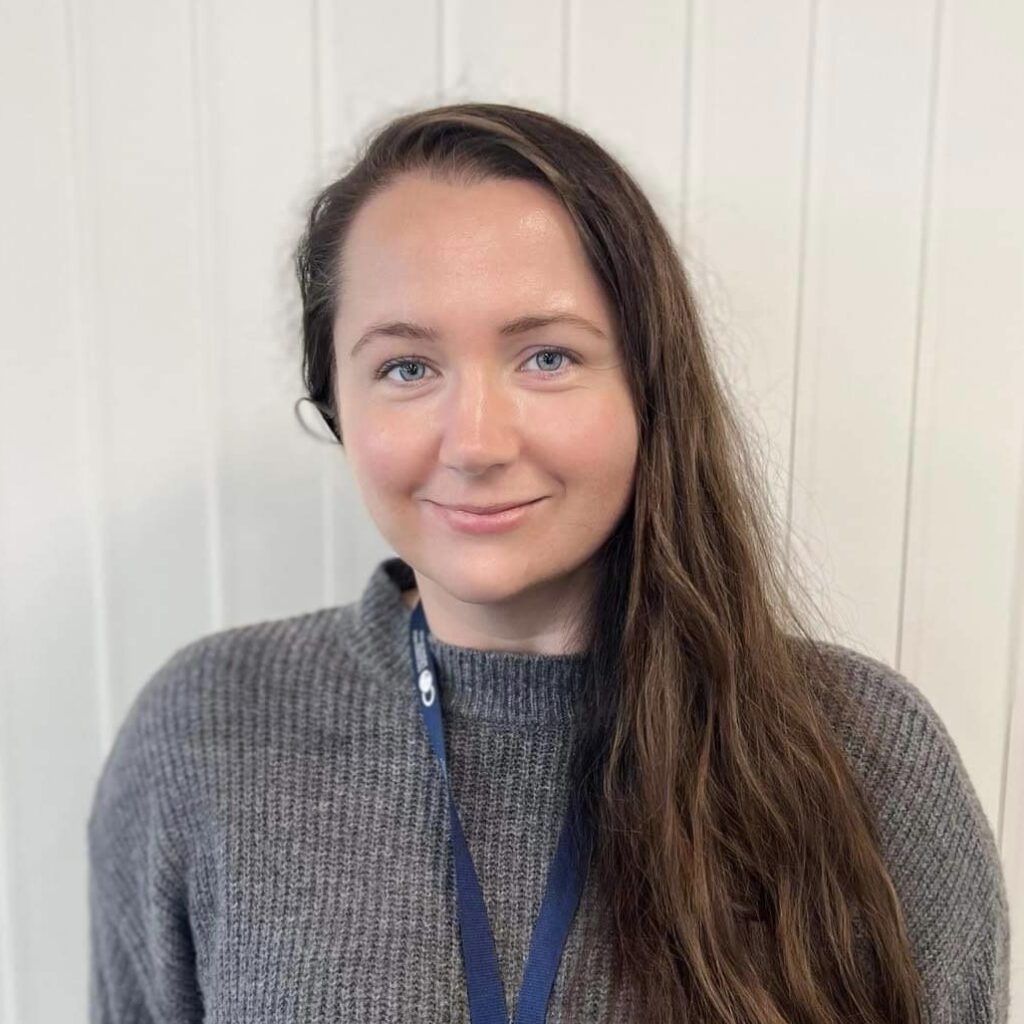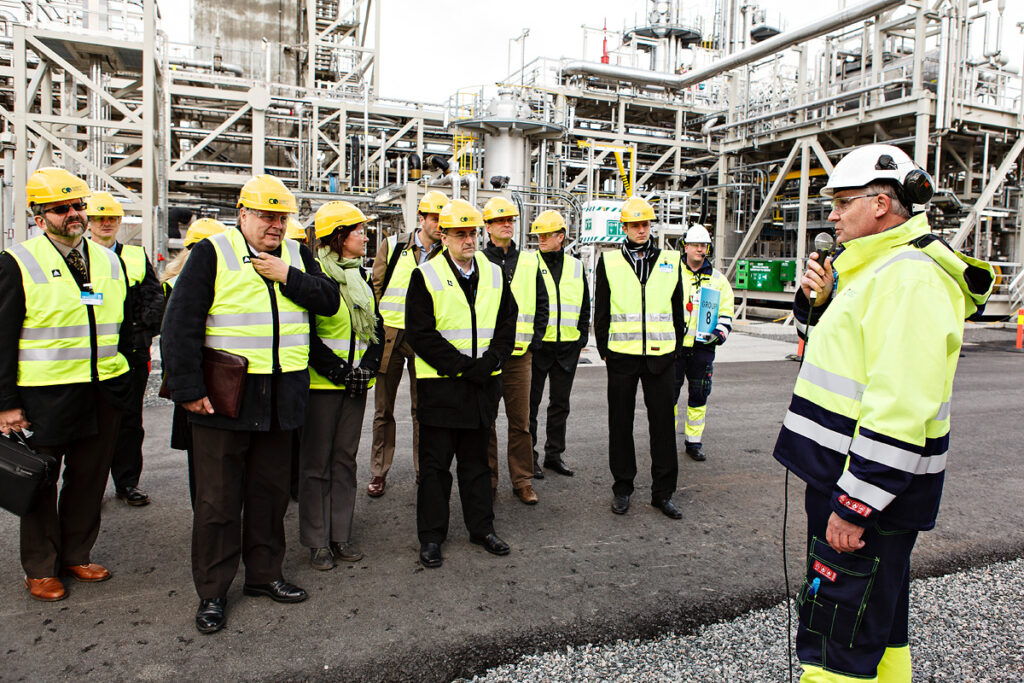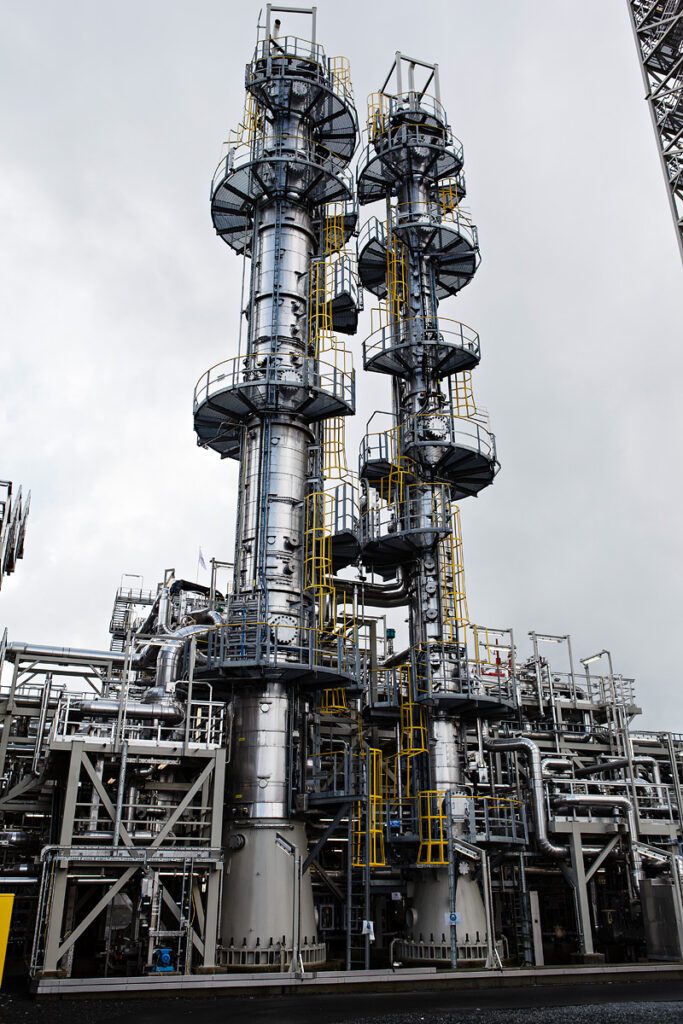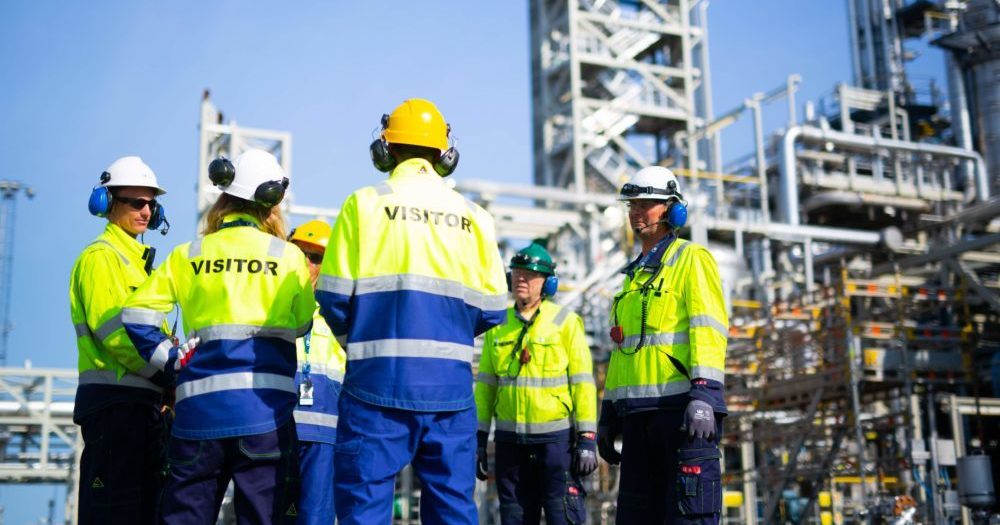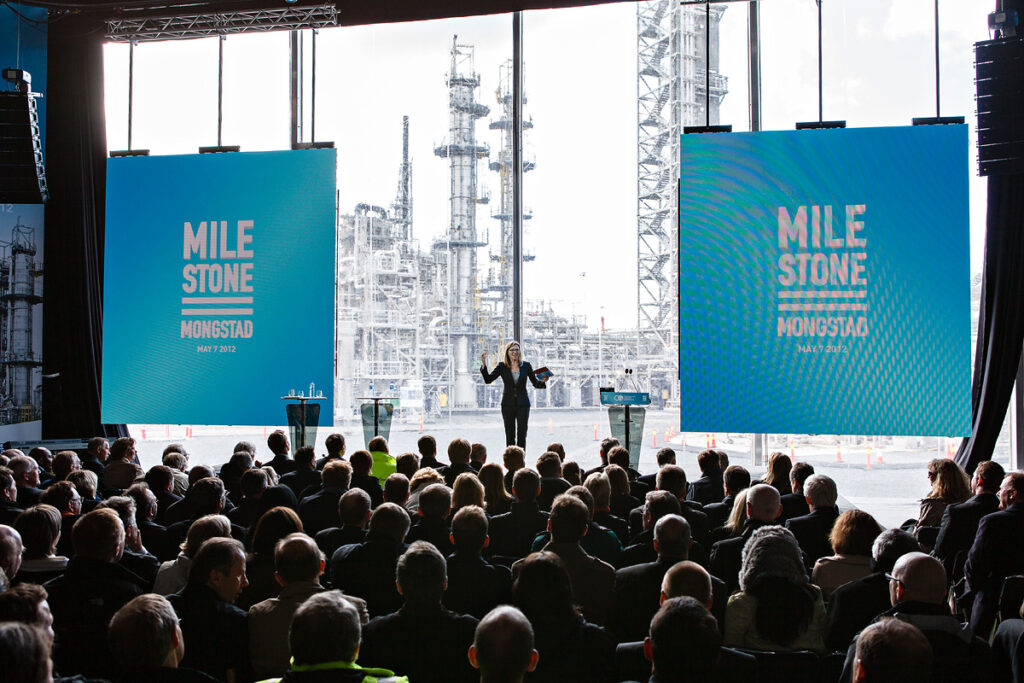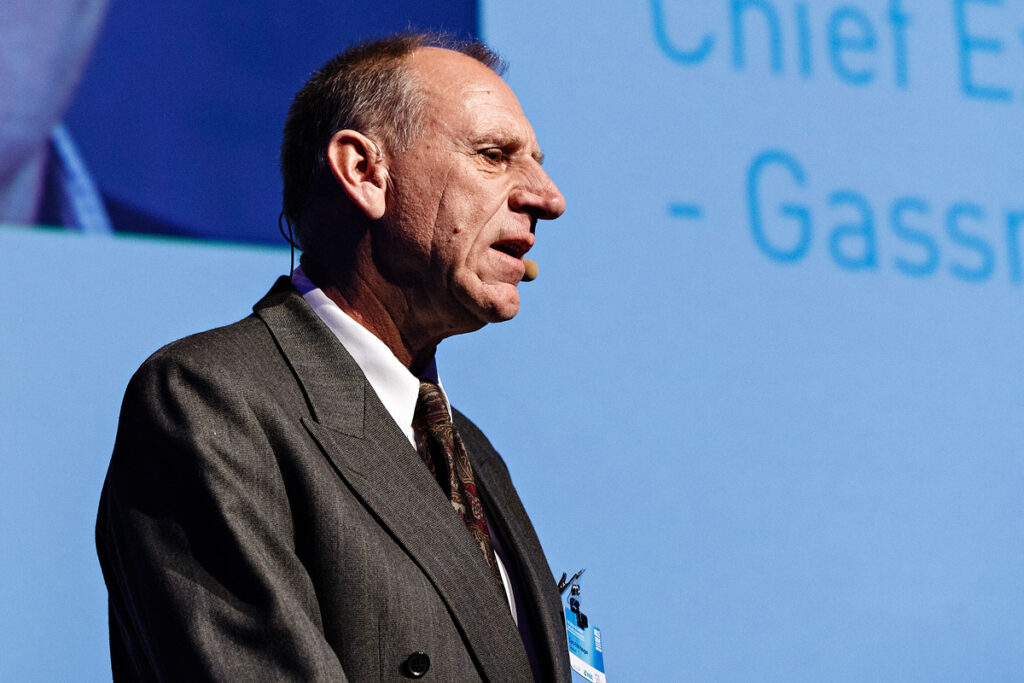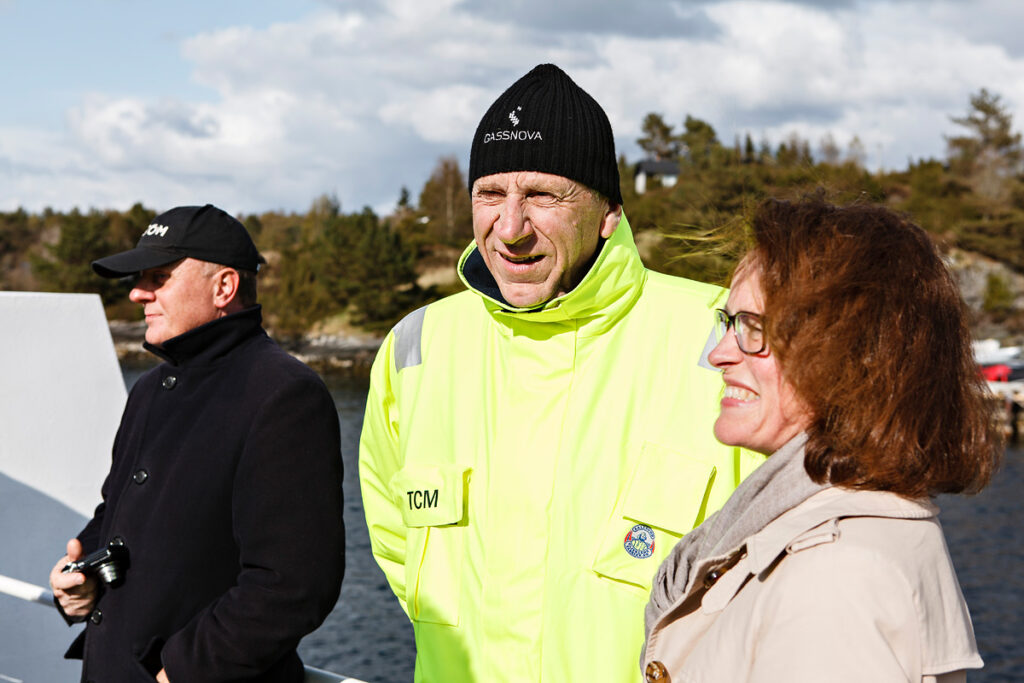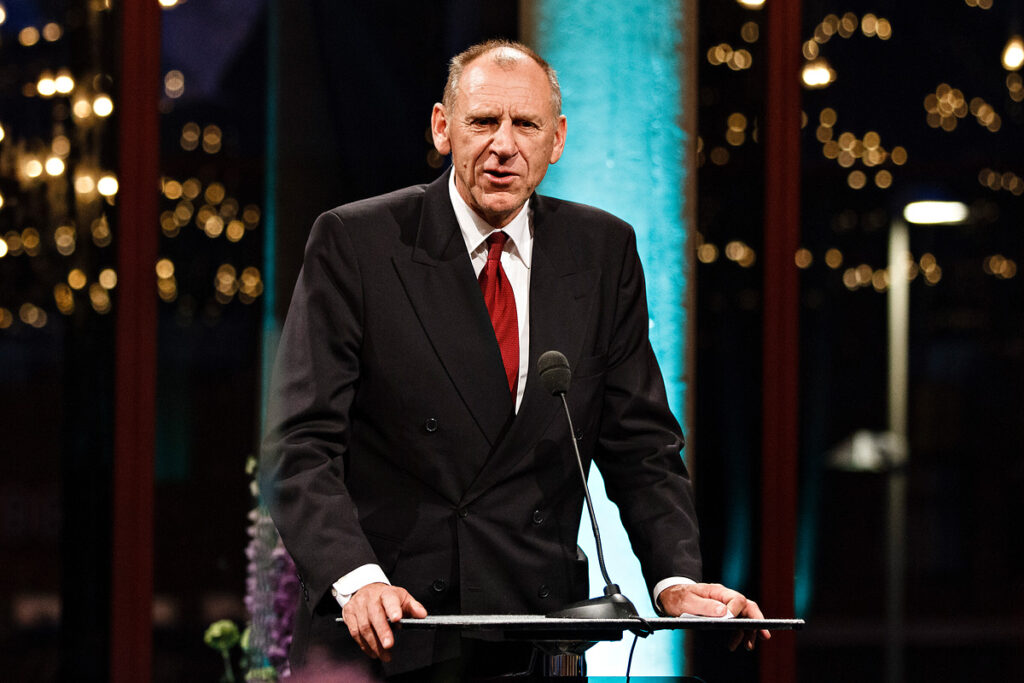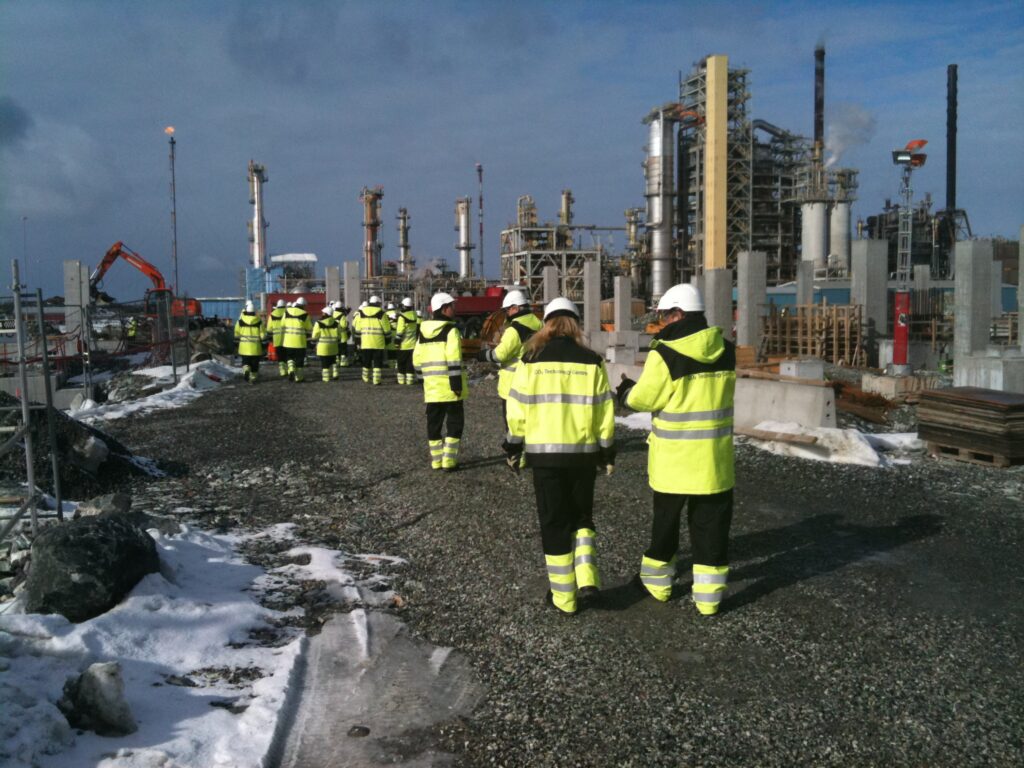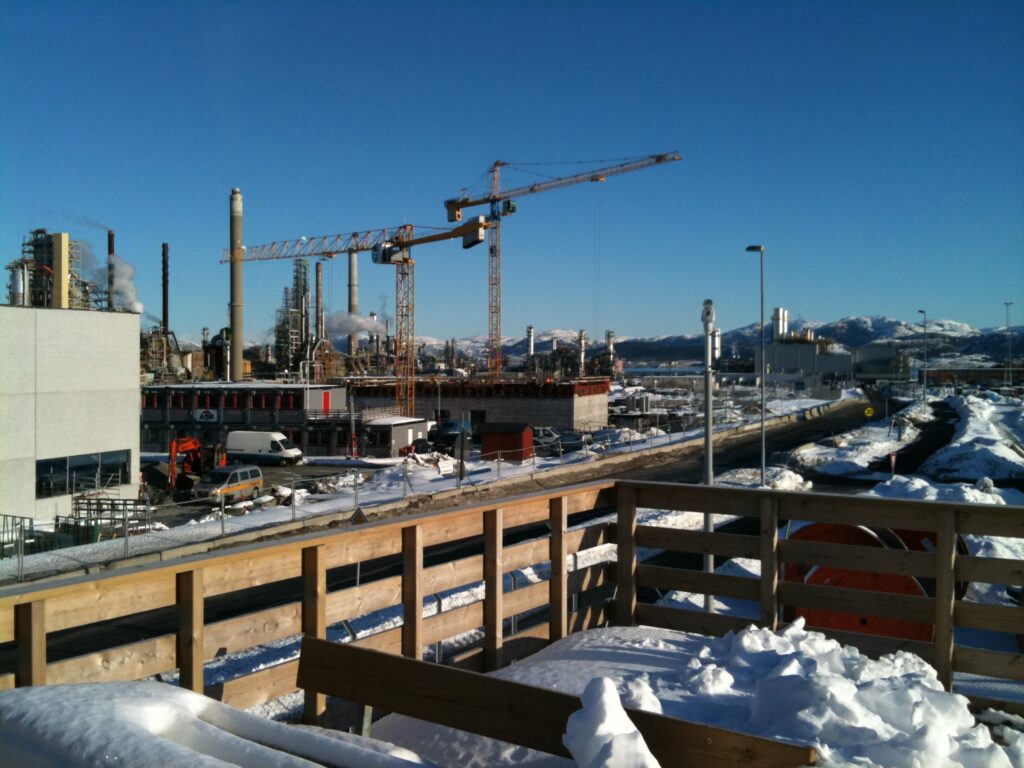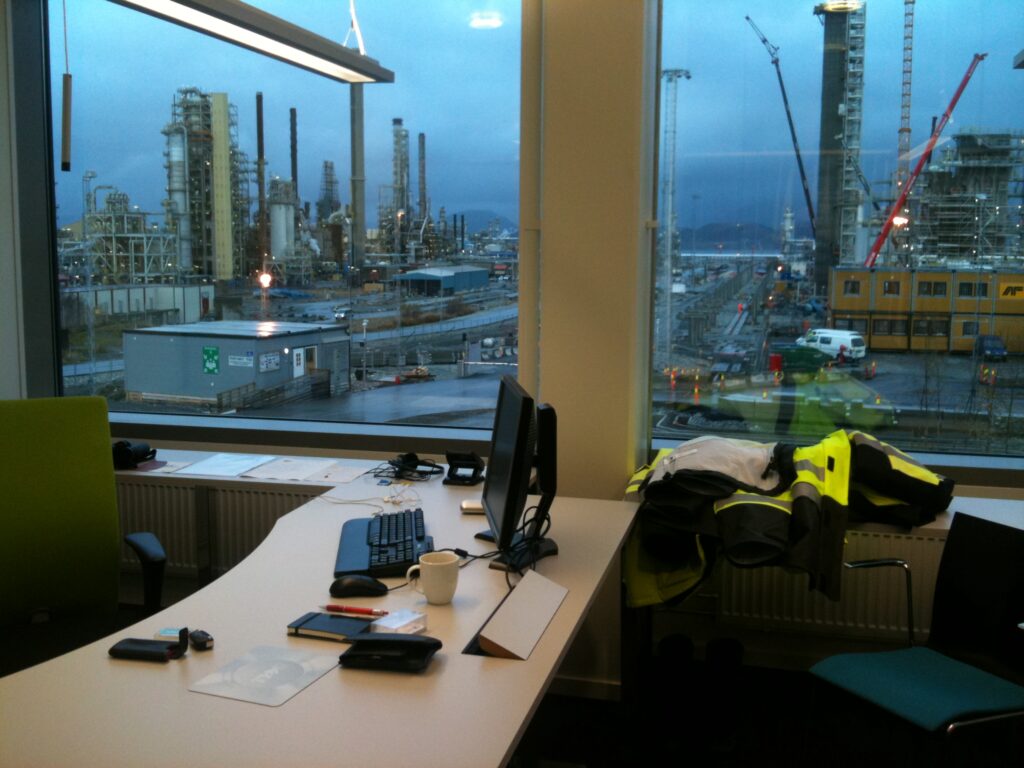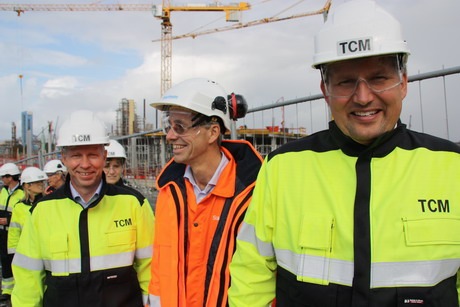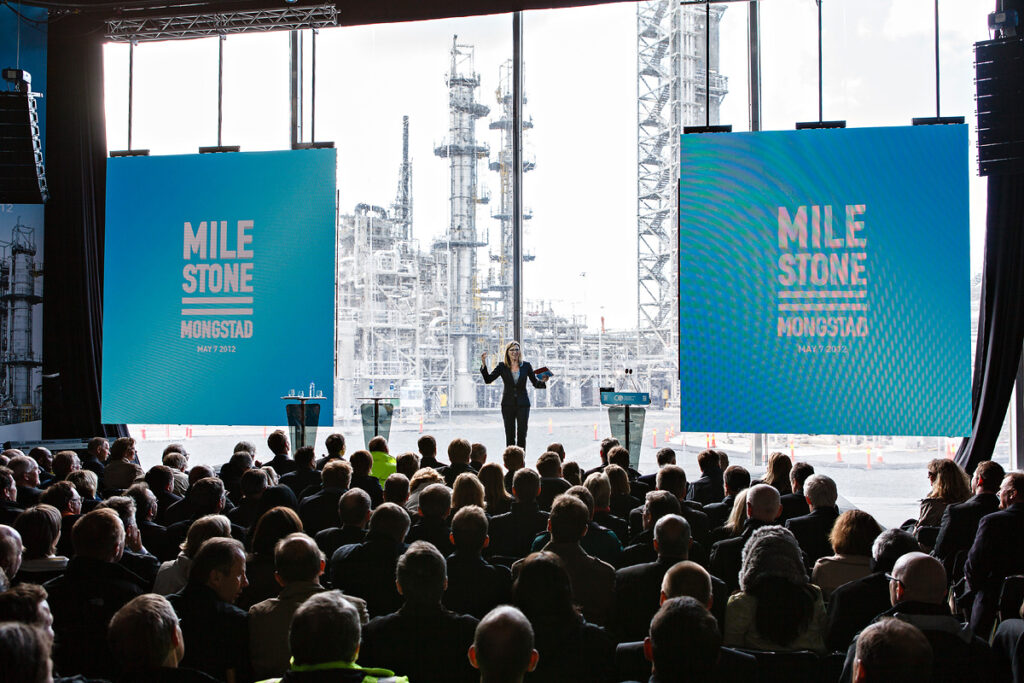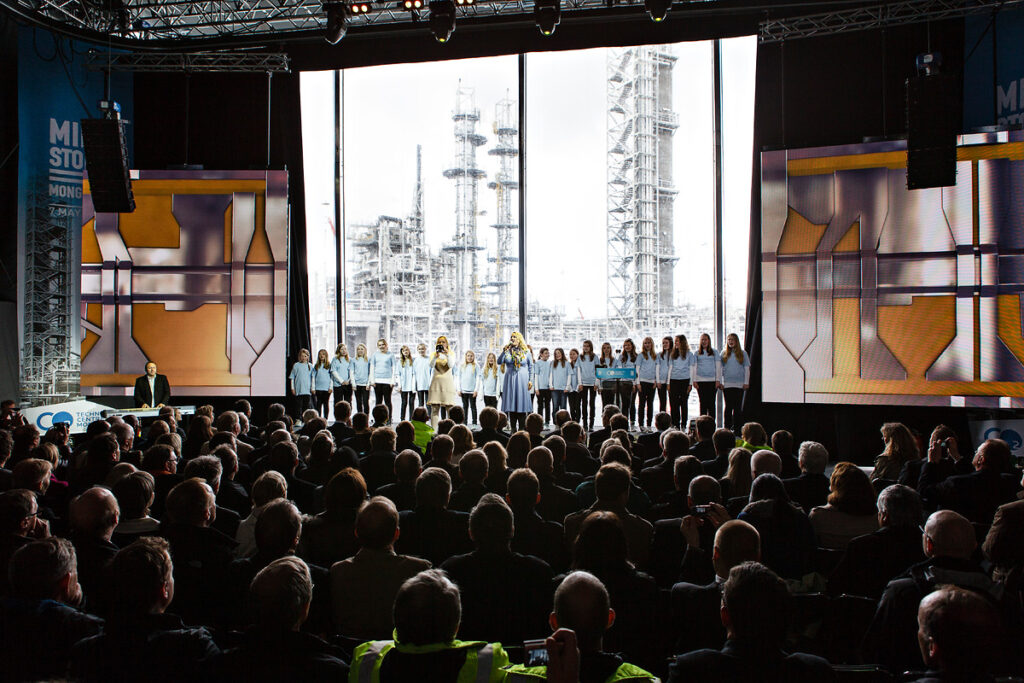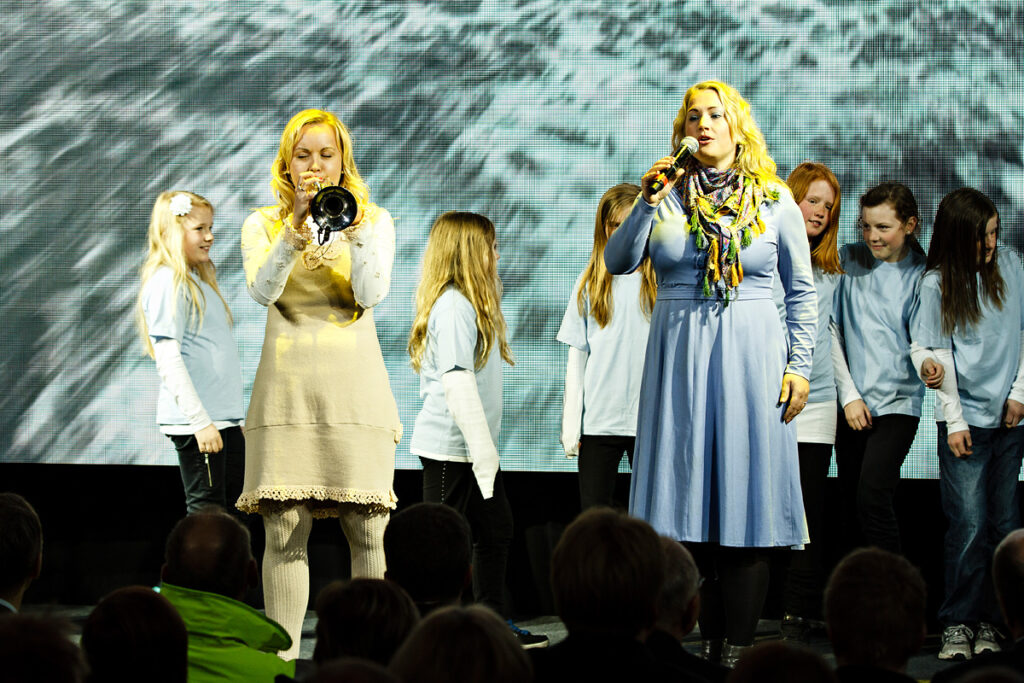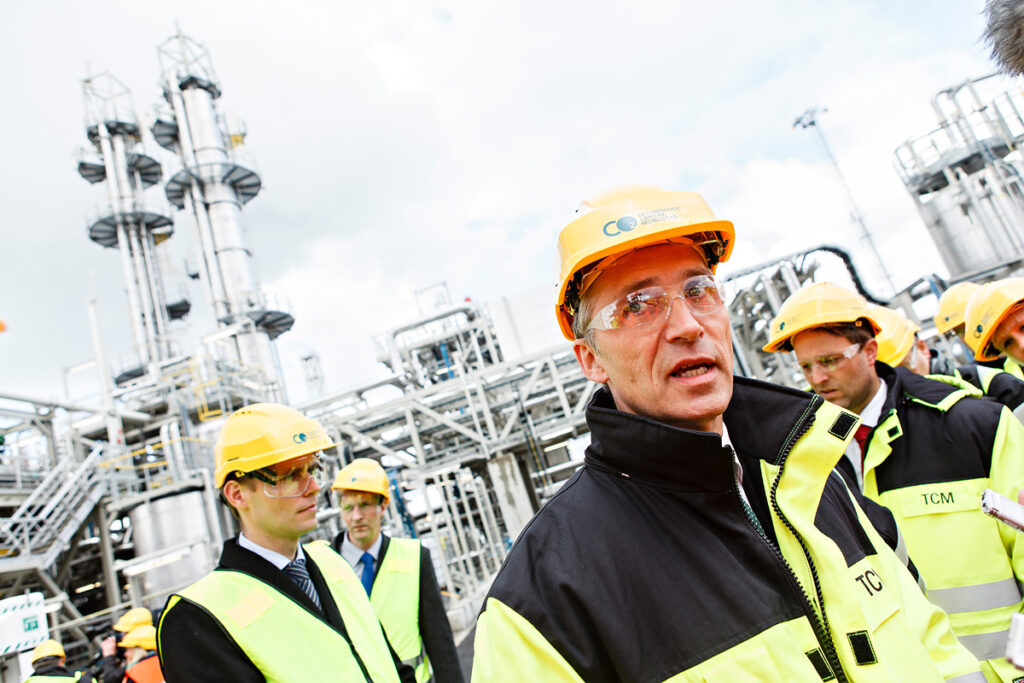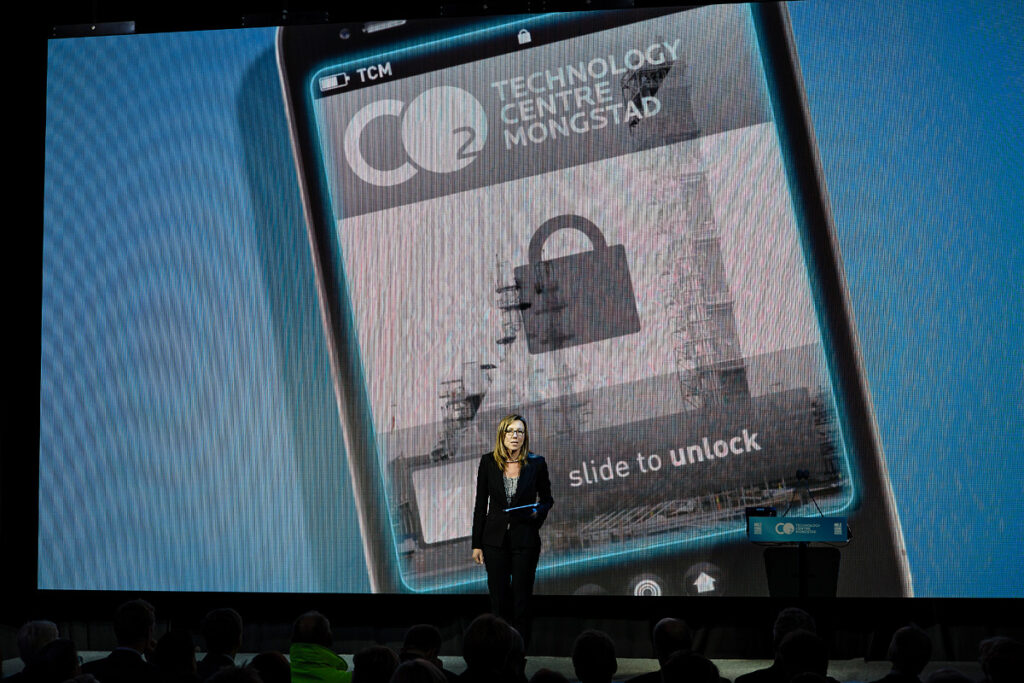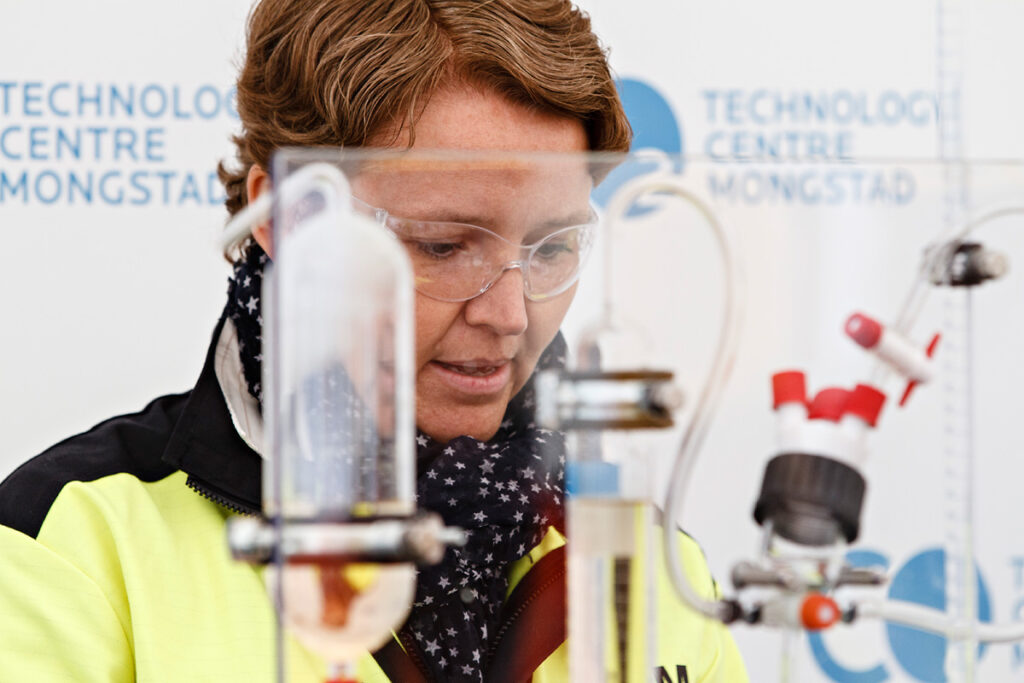– Aker has a lot to thank TCM for
When I look at everything that is now moving in the market for carbon capture and storage, I can only be optimistic. That’s what Aker’s «grand old» industrial builder and head of the gas technology business, Oscar Graff (69), says.
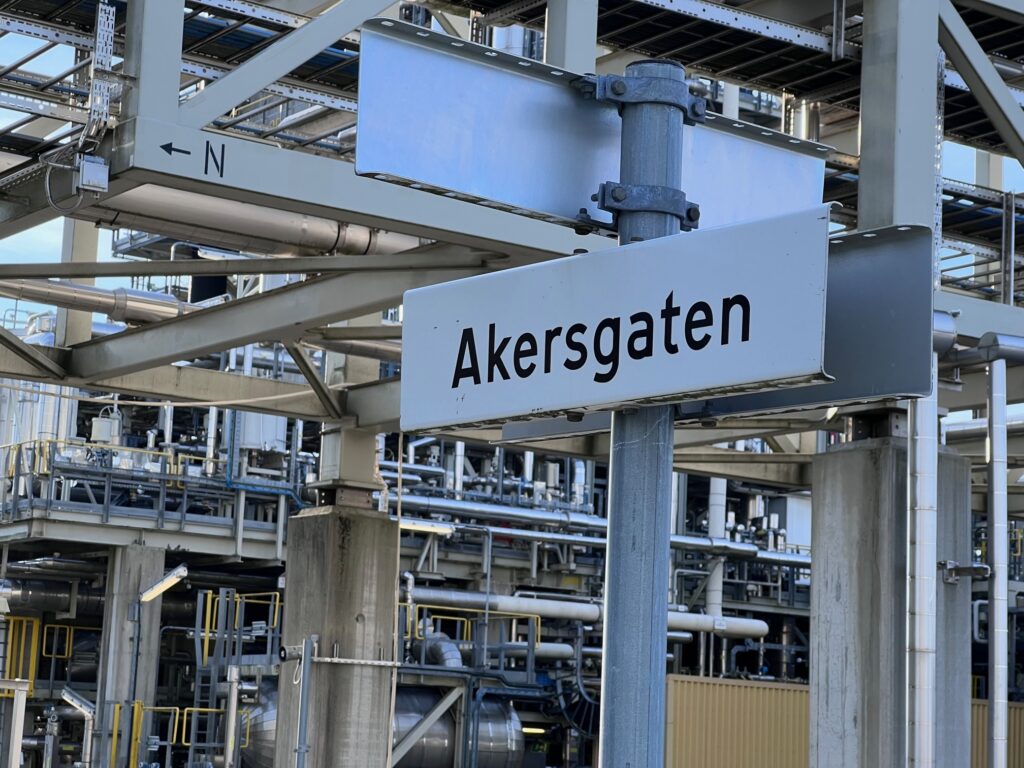
Until he retired two years ago, he spent all his time on technology and project development, with construction and then testing at TCM’s plant as one of the highlights of his career. He still follows the CCS industry with a watchful eye, among other things through his board position in Aker Carbon Capture.
Aker was early out with CCS projects
– For me, it is basically about being able to go to the grave in the knowledge that there is both hope and possible to save our common planet. The UN’s latest climate report is frightening reading. The climate challenges are gigantic, and both the UN and the IEA leave no doubt that carbon capture and storage, together with the transition to renewable energy, is an absolutely necessary part of the solution. My descendants should know that my generation has also understood the seriousness and done the best we could to develop technology that makes it possible to avoid the world’s biggest environmental disaster.
According to Graff, Aker was out early out with projects, first with natural gas and permanent storage of CO2 in the Sleipner field in 1996. The experiences with the use of amine as a tool for removal of CO2 in this and several other natural gas projects, indicated that this was also applicable in the most other industries – with necessary adjustments. The difference between removing CO2 from natural gas and flue gas is mainly that the flue gas has a low pressure (i.e. treatment of large volumes), and that it can contain oxygen and other components, which can have a negative impact on the amine solution.
Collaboration with SINTEF and NTNU
– In 2005, we landed a strategy for investing in post-cleaning with amine technology. Post-cleaning was applicable and could be used for most industrial flue gases. We defined 15 improvement points for CO2 capture with this technology. At the same time, we established a team of experts which has been the core in our developments. Collaboration with the research communities at NTNU and SINTEF was an important prerequisite – we needed research partners who could do analyzes in the laboratory, and we needed our own test facilities to verify the solutions.
In 2008, SOLVit was launched, an eight-year research program between Aker Clean Carbon, NTNU and SINTEF, and with Gassnova as a financial cocontributor. The same year, Aker built its mobile test unit (MTU) in Verdal, and at Tiller in Trondheim, a new test facility was put in place. The purpose of the investment was to develop technology with less energy demand and lower emissions. In the winter of 2008 – 2009, the MTU was first used for testing and measuring CO2 capture from a gas power flue gas in Risavika near Stavanger. The world’s first, comprehensive emission measurement from amine plants to air was carried out.
– The goal was to test the efficiency of using the amine solvent both in terms of energy consumption and emissions to air, and we succeeded quite well.
Went out into the world with MTU
The MTU was taken to Scotland and on to Alabama in the United States for testing with other types of flue gas sources. These experiments also led to significant experience and great progress. Among other things, they developed and patented a solution that stopped the formation of «mist» in emissions to air. «Mist» are small water droplets that the amine adheres to, and which can lead to high amine emission. This was followed by a number of test campaigns with various flues gases, among others; gas and coal power plants, cement factories and in connection with waste incineration. The main focus was to make the technology suitable for capturing industrial emissions. Recently, the MTU has been testing on blue hydrogen production at the Preem refinery near Gothenburg and is presently testing at the Polchar facility in Poland.
During the research program, Aker in 2009 was awarded a contract with TCM to design and build the amine plant and then test its technology in an industrial scale. In this connection, the MTU was transported to Mongstad for parallel testing.
– This was an exciting project for us. The big question was how the technology would work in an upscale setting, and the size of emissions under such conditions. We handed over our predicted data for plant performance to TCM and were strong in the belief that this will work as intended. It was still incredibly satisfying when, after the demonstrating, we could say that our calculations and predictions had been spot on, says Graff.
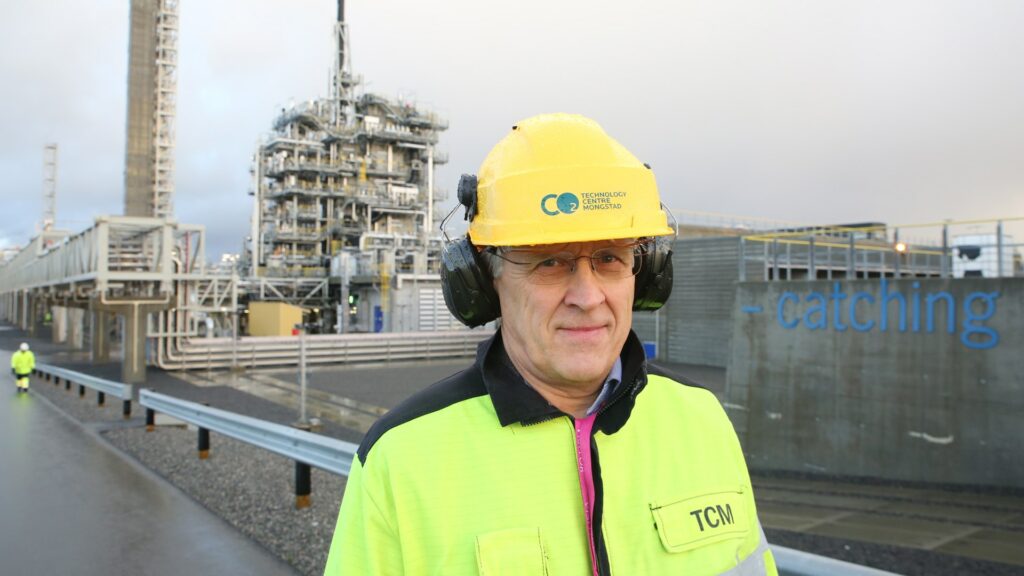
Oscar Graff has led Aker’s business to CCS for a lifetime. – We have a lot to thank TCM for.
Lay the groundwork for breakthrough at TCM
Aker’s commitment through the successful construction of the plant and testing at TCM laid the foundation for a solid market breakhrough in CO2 capture. As one of four possible suppliers, the company was invited to test the technology at Heidelberg Materials in Brevik. Their conclusion was that Aker had the best technology for the capture project. Great emphasis was also placed on the fact that Aker had built the plant at Mongstad, and that the company had completed a successful 2-year test with the MTU in Brevik and had built up broad expertise. The EPC contract was entered into in 2020, and the plant will be ready for capture and liquefaction of 400,000 tonnes of CO2 annually in 2024. The CO2 will be transported liquid form in ships for permanent injection and storage in rocks beneath the North Sea.
– We were also invited by ScottishPower to take part in a national CCS competition in the UK for the annual capture of two million tonnes of CO2 in connection with one of Europe’s largest coal power plants near Edinburgh. We were the first to capture CO2 in UK with our MTU. After FEED execution, long term testing with the MTU and documenting efficiency with our solvent, the authorities concluded in 2011 – following a recommendation from ScottishPower – that our technology was preferable. However, the project did not go ahead, and the power plant was shut down some years later, but the process itself was instructive and gave us learning and faith in what we had to offer.
«Just Catch» in the Netherlands
Over the years, Aker has refined its concept for the delivery of compact and standardized facilities for capturing CO2. With «Just Catch», costs and construction time are significantly reduced at the same time as the area requirement is significantly less than for conventional facilities. In 2019, a contract was entered into between Aker Solutions, then with Oscar Graff as head of CCS, and Dutch Twence, which owns and operates a large waste sorting and incineration plant in Hengelo near the border with Germany. When the plant is completed in November next year, after only 18 months of construction, 100,000 tonnes of CO2 will be captured and liquefied annually from the waste incineration flue gas. The catch capacity is slightly larger than at Mongstad, but the plant needs less than 10 percent of the area.
Pioneering work
– The module based capture plant for waste incineration in Hengelo and the large-scale plant for cement in Brevik will be first of its kind in the world, so you can rightly call this pioneering work.
In Hengelo, the CO2 will be transported chilled and in liquid form for use in local greenhouses, where it replaces the use of fossil CO2. – That in this way a project is realized that includes CO2 utilization, is both fun and important.
TCM – a large laboratory
Oscar Graff emphasizes that Aker would not have reached this far with its investment in CCS without TCM. In his eyes, TCM is a large laboratory, not least characterized by the facility’s great flexibility.
– During the planning of the facilities at Mongstad, the size and flexibility of the plant was the subject of discussion. It was expensive, but the experience after ten years of operation is that the investments were right and necessary. For our part, it has provided very valuable experience, both in the terms of design and production of modules that were assembled at Mongstad, and testing of our solvent. We learned an incredible amount about how we could commercialize the entire value chain of CO2 capture, and from that we are harvesting now.
He describes the collaboration between his own engineers and the staff at TCM as very good. – In the test phase, we saw, for example, that the choice of material for some parts of the amine plant had not been optimal, but there we jointly found new and better solutions. Actually, we were quite surprised at how easy it was to achieve stable operation and capture over time. That the plant now has been in operation for 10 years, and that it is still just as relevant, is a seal of quality for both TCM and Aker, says Graff.
TCM’s professionalism a success factor
He makes no secret of the fact that Aker was concerned that TCM’s business model implied that competing technology suppliers would be allowed to test at the amine plant after they had ended their campaign in 2014.
– However, it has turned out that TCM has managed to comply with the strict agreements that were into confidentiality about the secrets we shared with selected people about the nature of the technology, and similarly later for other technology suppliers who have used the facility. TCM’s professionalism in this respect has thus been an important success factor for the business. In retrospect, we must also be able to say that it has been a strength for Aker that also other large and reputable players have invested in amine technology and chosen to test these at Mongstad. If you look at completed and planned carbon capture plants globally, the amine technology has become dominant, and will probably retain this position for many years to come.
Wish TCM the best of luck
The Aker veteran also praises TCM for the position the company has taken in the international CCS community through, among other things, sharing knowledge from open and research-based test campaigns at the facility. – I also think it is very good that TCM has now facilitated testing of new capture technologies on a smaller scale. This is very important for the entire CCS industry.
Oscar Graff believes that TCM should include solutions that ensure that CO2 captured in connection with tests at the plant is not emitted, but is permanently stored or has an industrial application. – It will be good both for the climate and for TCM.
Do not regret that it became technology
Fifty years after he started his education and long career in process and gas technology, Graff remembers the dilemma ha had when he came to Trondheim to study. Should he study at the Norwegian College of Teaching in environmental sciences, or start at NTH (now NTNU). The study advisor at NTH added the crucial word: «You know, Oscar, if you are going to contribute something that brings the world forward, you have to invest in technology.» – I have not regretted it!
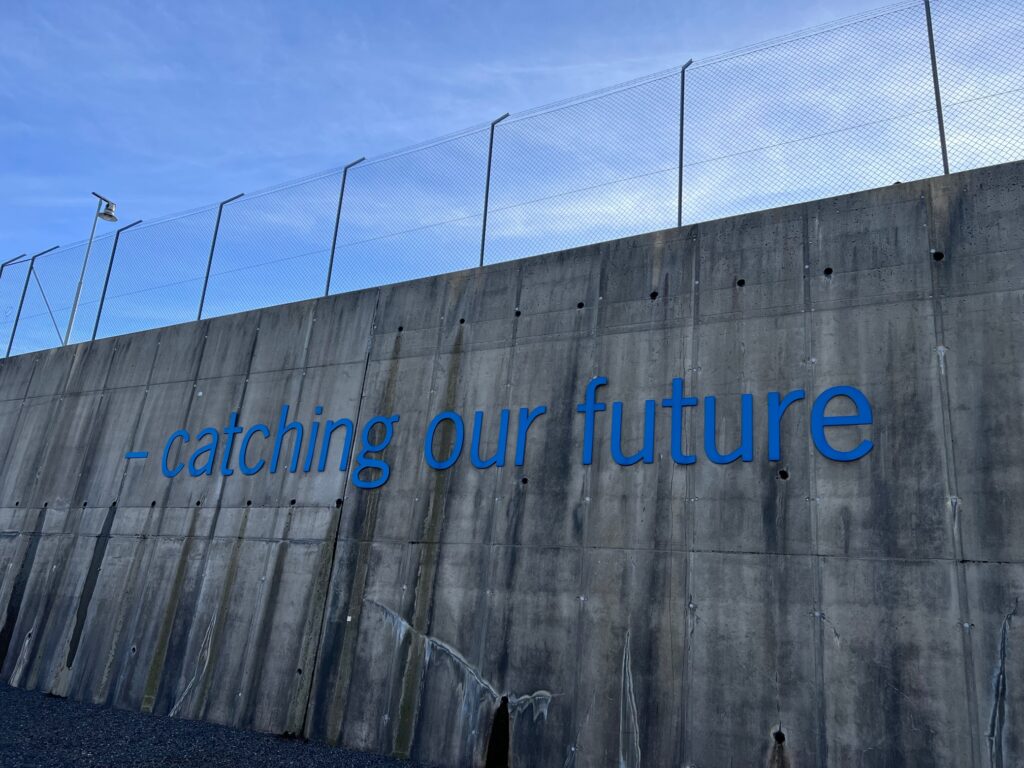
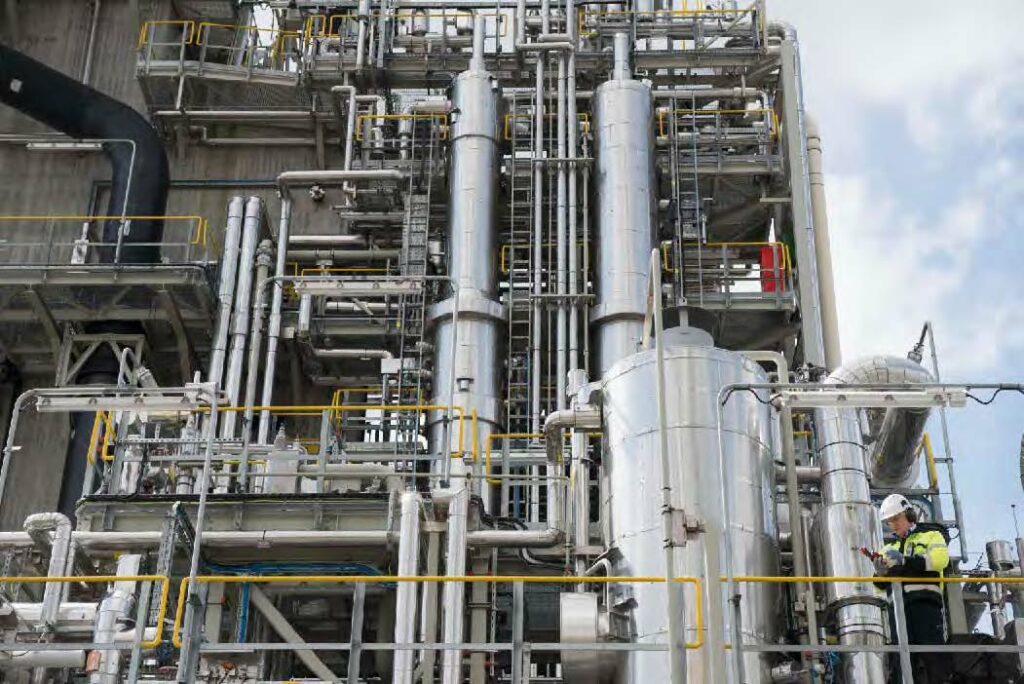

Teknologisentret på Mongstad 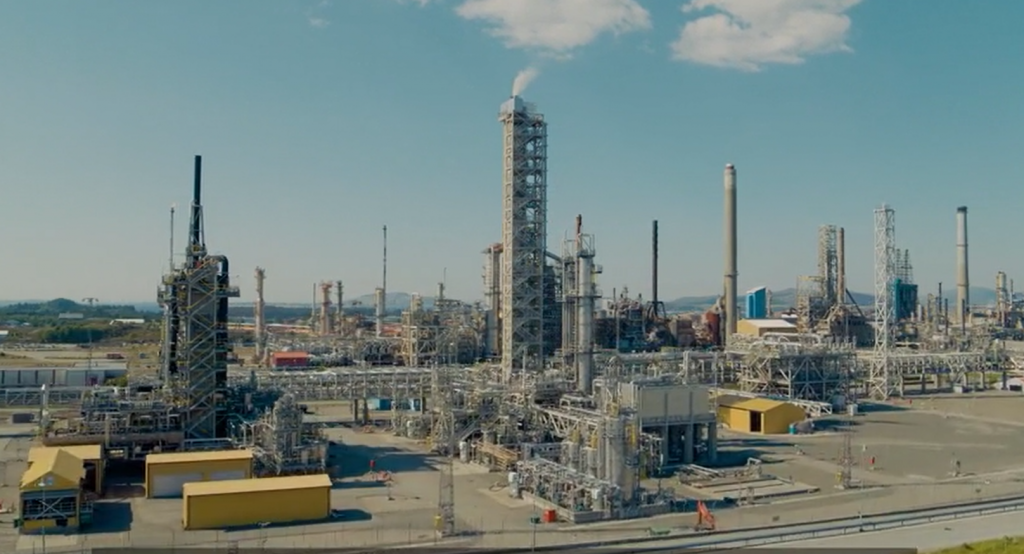
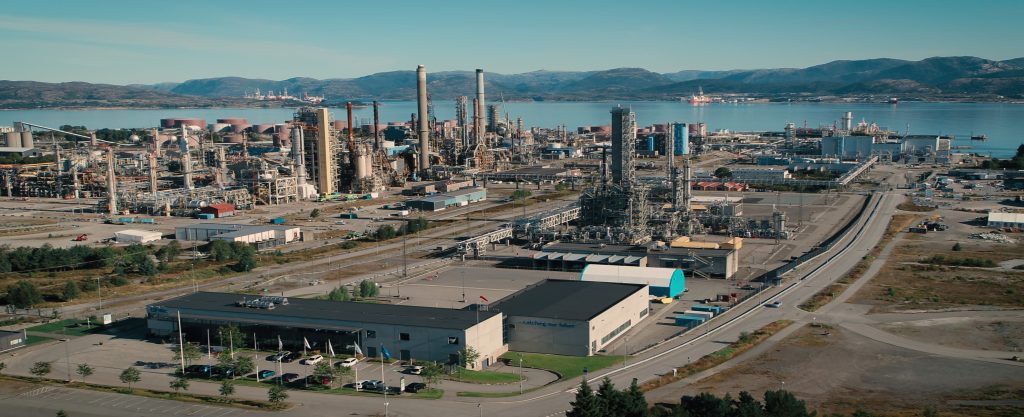
We have learned a lot; Site for Emerging Technologies
TCM’s 10 years of testing to date have helped development and de-risking of various carbon capture technologies with the goal of enabling the deployment of successful full scale capture projects.
The majority of TCM’s testing in this period has been on amine solvent-based carbon capture. However, over the same 10-year period, less mature technology alternatives to conventional solvent-based carbon capture processes such as membrane systems, sorbent systems or the use of novel solvent types or rotating capture beds have become an increasingly important topic in the CCUS community.
Technology Readiness Level (TRL)
A common system for assessing the maturity of a technology from initial concept through to widespread industrial uptake is a Technology Readiness Level (TRL) scale. There are various versions of this scale available, with many companies using their own internal scale and definitions. One common scale used for assessment of carbon capture technologies is the US Department of Energy scale, shown below, which focuses on the readiness of a capture technology for full-scale power generation applications.
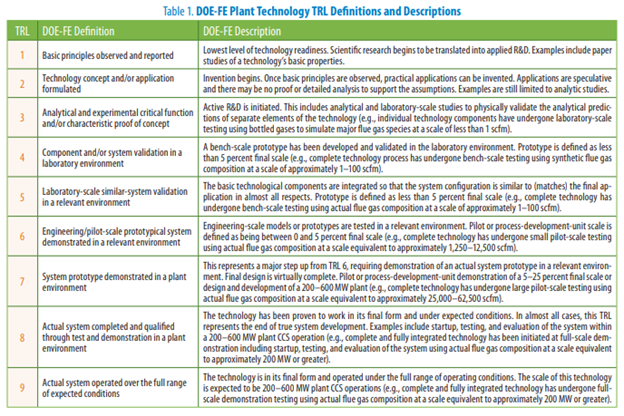
Using this scale, a successful demonstration in TCM’s solvent-based amine or chilled ammonia plants, with capture capacities up to 75,000 tonnes of CO2 per year, would enable a technology to demonstrate a TRL of 7 on the DoE scale.
TCM Site For Emerging Technologies
In 2021, TCM began testing on its new “Site for Emerging Technologies” which is designed for smaller scale testing of lower TRL technologies when compared to the TCM amine and CAP facilities. With the capacity to capture up to 18,000 tonnes of CO2 per year, his area of TCM (shown in the paved area below) is a “plug & play” testing area where technology developers can test skid-based capture systems with real flue gas and utilities provided by TCM while benefiting from the specialist knowledge and experience of TCM personnel.
As mentioned, technologies typically best suited for testing at the TCM Site for Emerging Technologies would be at a smaller scale and lower TRL than those tested in the amine or chilled ammonia test facilities. However, many of these technologies are based on modular designs of standardized size in which the scale-up strategy is simply to increase the number of modules for the required application. Hence, demonstration of a single module at the TCM Site for Emerging Technologies can enable significant development of the technology towards full scale.
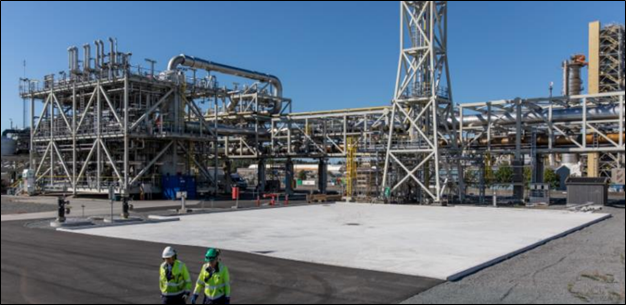
At the Site for Emerging Technologies, TCM can provide technology developers with:
- Up to 10,000 Sm3/h of real flue gas
- “Dirty” or treated Fluidized Catalytic Cracker (FCC) flue gas at 14% CO2
- Clean gas boiler flue gas at 8% CO2
- Facility to dilute flue gas with air or enhance the CO2 content by recycle.
- Utilities: including seawater, process water, electrical power, instrument air and drains.
TDA & MTR at the Site For Emerging Technologies
The first two test campaigns on the Site for Emerging Technologies were successfully completed in early 2022. These projects were both funded by the US Department of Energy/NETL and are now in the decommissioning and reporting phase of their respective tests at TCM. Both TDA & MTR have submitted abstracts for the GHGT-16 conference based on the experience and results from their tests at TCM.
TDA’s hybrid sorbent membrane system, shown at TCM in the picture below, is a 2-stage process with a membrane based and a sorbent-based capture step. For further details on TDA’s technology, their test goals at TCM and their vision for full-scale applications, please see their 2021 NETL Project Review Meeting presentation.
“Running a field test in the midst of a global pandemic presented a number of new challenges, but we are pleased with the results of the test campaign nevertheless and are delighted with the system up-time we experienced throughout the campaign. Having the support from TCM and the experienced team in Norway was tremendously valuable. TDA looks forward to future opportunities to test at and collaborate with TCM.” – David Gribble, Senior Scientist at TDA
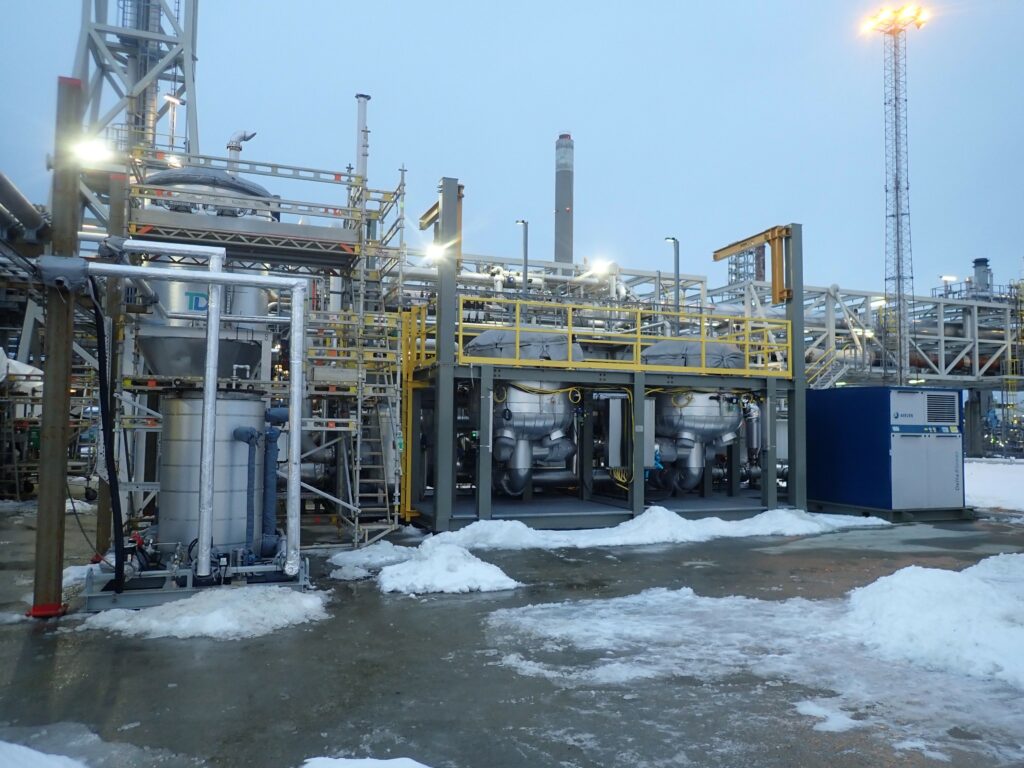
Membrane Technology Research’s (MTR) membrane system, shown in the picture below, is a multi-stage membrane process. For further details on MTR’s technology, their test goals at TCM and their vision for full-scale applications, please see their 2021 NETL Project Review presentation.
“The opportunity to test with real flue gases at a world-class facility like TCM has been an important development step for our membrane carbon capture technology. The support from TCM personnel during all project phases was instrumental in the success of the field test”, said Tim Merkel, VP of Technology at MTR.
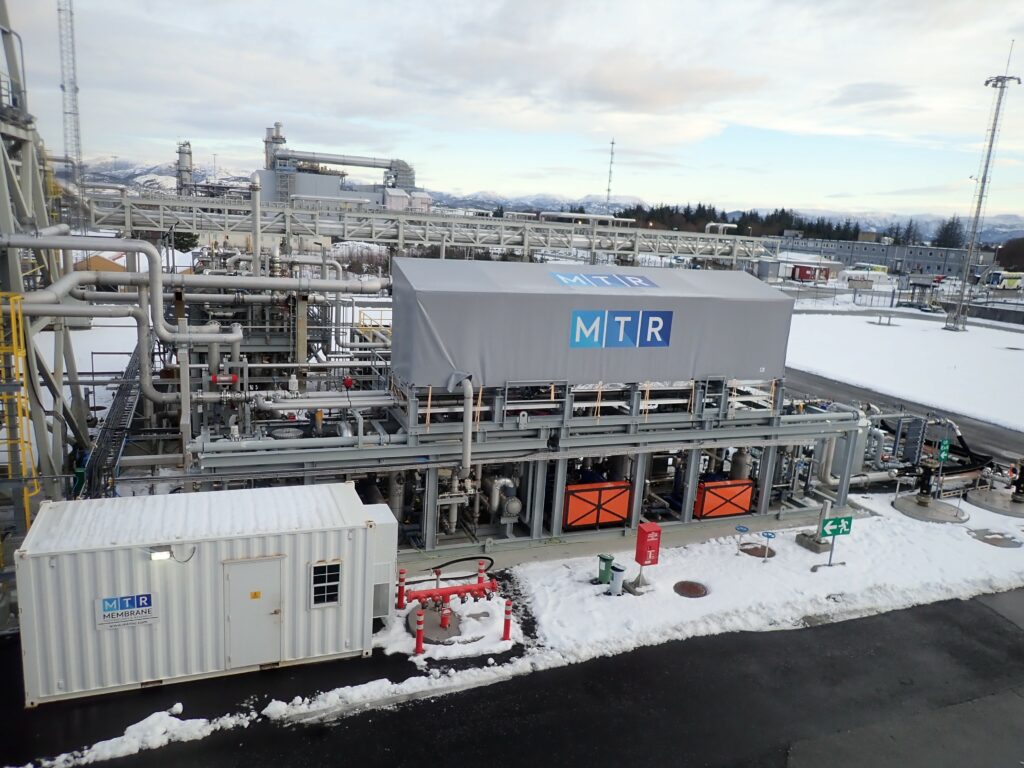
Future Campaigns
Interest in testing at the TCM Site for Emerging Technologies has been high, with the following projects scheduled to test there in 2022-23:
- MOF4AIR – Part of an EU project aiming to develop and demonstrate the use of metal-organic framework materials for carbon capture. They will test a sorbent-based pilot system at TCM. See https://www.mof4air.eu/ for further information
- ACCSESS – Part of an EU project aiming to provide cost efficient, replicable, safe and flexible CCUS. They will test a pilot system using an enzymatic solvent and rotating packed bed (RPB) absorber at TCM. See https://www.projectaccsess.eu/ for further information.
- Innosepra- Funded by the US Department of Energy/NETL, Innosepra aim to demonstrate their sorbent-based system for carbon capture at TCM. For further information, please see Innosepra’s 2021 DOE Project Review Meeting presentation.
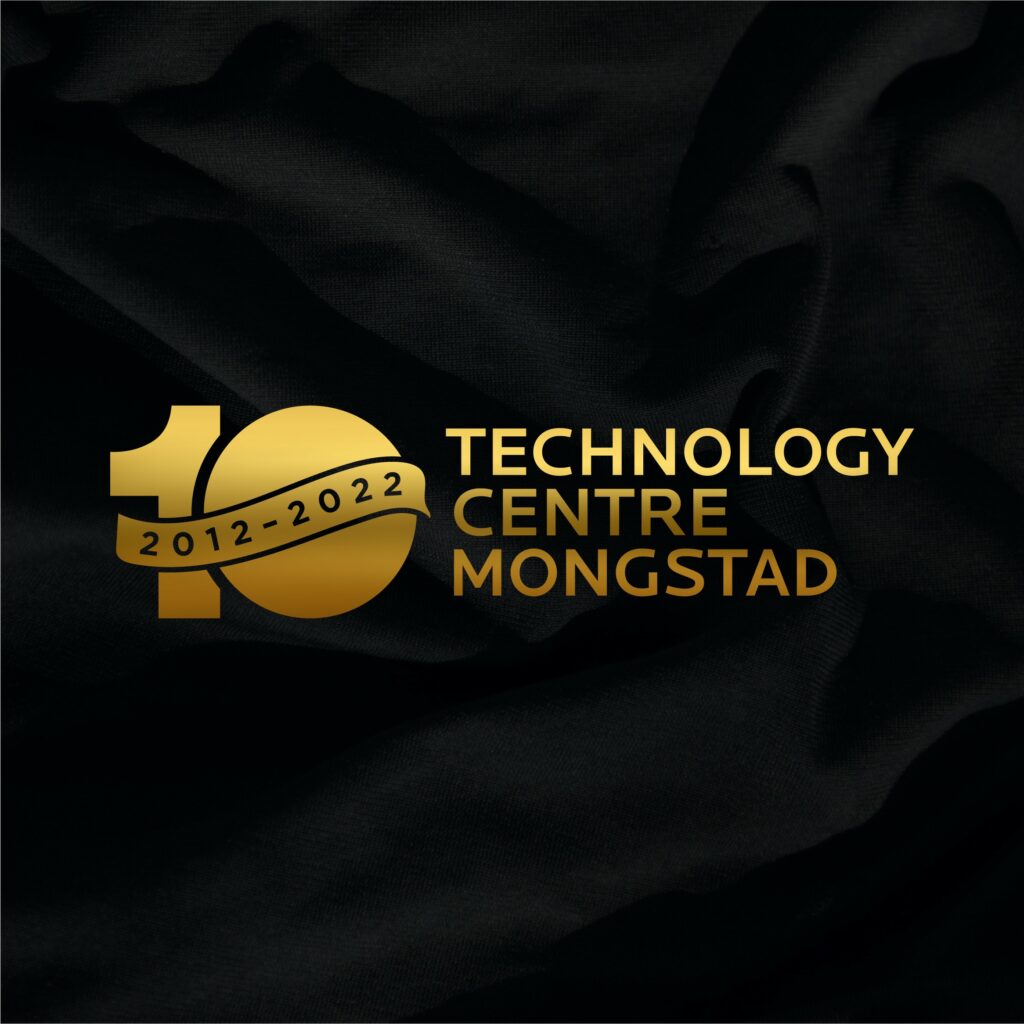
She thrives at TCM
Technology Centre Mongstad (TCM) has a 10-year anniversary in 2022. We celebrate ourselves with interviews with people who in various ways have had impact on the business in these years. Anette Beate Nesse Knarvik can look back on four years as process engineer in the company and does not regret the choice.
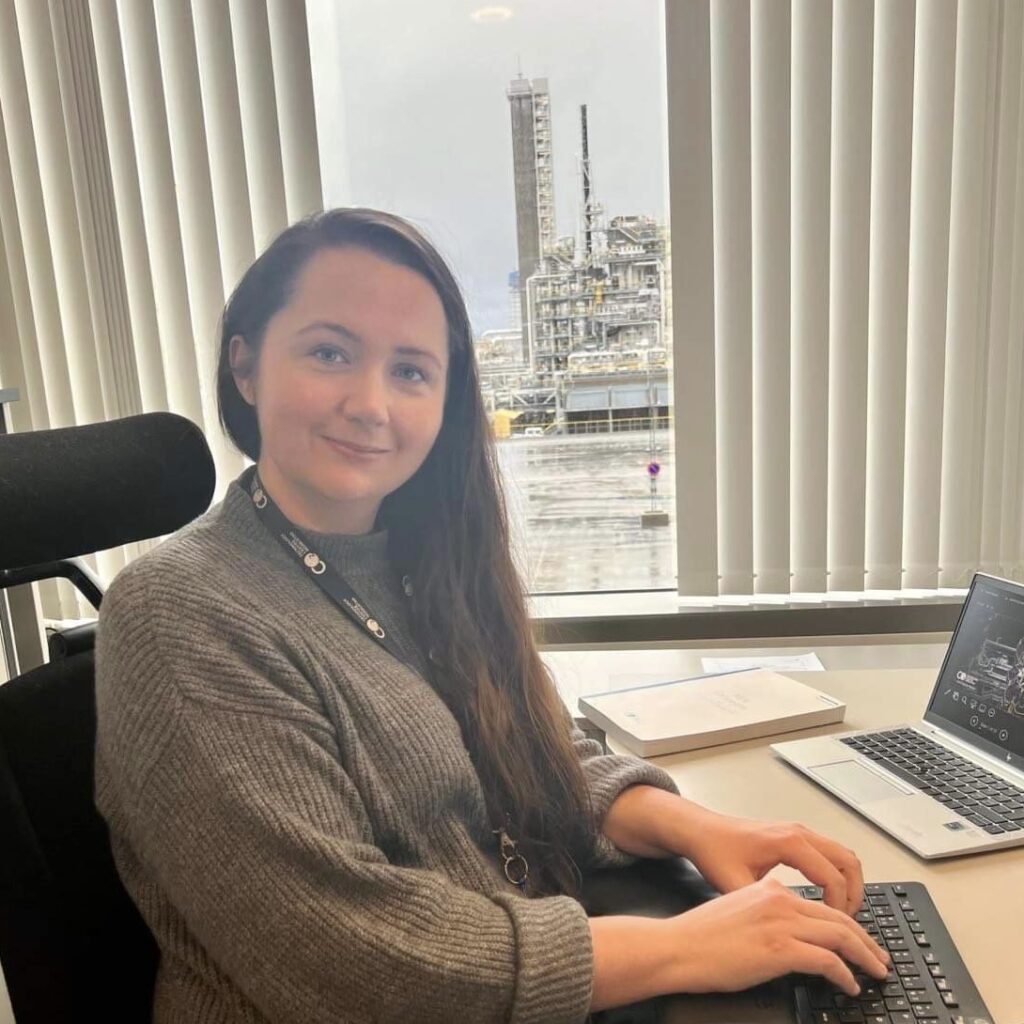
Why did you apply for TCM?
– I worked for Equinor at the Mongstad refinery as an operator at the jetty area for five years while I studied. When I finished, I got a job at Equinor, and was able to apply in the internal job market. A temporary position in TCM’s operations department seemed interesting, and when it ended after eight months, a permanent position appeared in the technology department. Then I had experienced that CO2 capture was a subject area that was both relevant in relation to the education and which suited me. My experience is that TCM is a good place to be for everyone who is interested in technology development, and I really enjoy the job.
How was your first meeting with TCM?
– Then I met in an interview with Anne-Berit Hjorth Viken, who then was operations manager. I remember I was very excited and maybe a little nervous, but it was a very nice and good conversation. On the first day of work, I was well received by her and the others in the department. For me, as a freshman in the subject, it was very reassuring that she I was to substitute for, was still at TCM and could give med a thorough introduction to the tasks. I was taken care of in the best manner and got a very good first impression of TCM.
What will you highlight as the most rewarding and interesting work you took part in at TCM?
– In general, I thrive best when I am assigned responsibility for finding out and solving problems that may arise during testing of technologies. Sometimes there may be properties of a solvent that are being tested, and other times something that applies to the plant itself. Then it is very rewarding to be able to convey findings and results in a test phase that customers can learn something from and use in their work to commercialize their technologies.
I have also worked a lot with reclaiming, which in our context means giving “new life” to solvents that have been in use for a while. It involves removing molecules that have formed in a process and that reduce the efficiency of the solvent.
Are there projects or events you remember back with special joy?
– I remember well the first time I got to lead the planning and execution of a reclaiming. It was really exciting! In advance, I got a thorough introduction from my experienced colleagues, and learned a lot along the way and in the follow-up which I later had good use for when I have led these operations.
I also thrive very well when I get to lead guided tours of the facility and explain what work on and how things work. Among other things, we have had visits from politicians, managers and technologists from companies considering collaboration with TCM, and many interested people from the owner companies.
What are you working on especially now?
– We are now preparing the test campaign American RTI will carry out during the spring at the amine plant. My task is to coordinate the activities between the various departments, so that everything is in place for good implementation. When the campaign starts, I will ensure good contact between those who come and the staff at TCM.
When you tell your friends and acquaintances about the business at TCM, what do you emphasize as the most important utility value?
– Even I knew very little about what was going on at TCM before I started. But I think I have managed to explain to those I associate with that CO2 capture is important and necessary as a tool in the climate fight. Testing of technologies cannot take place in a small laboratory. In order to reduce risk and ensure that things work, testing must take place on an almost full scale – and we offer that at TCM. I also talk about the usefulness of open test campaigns, where experiences and results are published – to the delight of all interested.
What is your wish for TCM the next ten years?
– For my own part, I hope to be able to still have TCM as a good and developing place to work. But most importantly, that those who will make decisions about the future of TCM give us the opportunity over the next ten years to contribute with a fantastic facility, as well as our experience and expertise, to the continuous development of efficient technologies for CO2 capture. Both Norway and the world need the experience from TCM to achieve the climate goals.
Name: Anette Beate Nesse Knarvik
Age: 29
Education: Master’s degree in process technology from the University of Bergen (UiB)
Marital status: Single
Affiliation with TCM: Senior process engineer seconded from Equinor, first in a temporary position and then in a permanent position, 2018 –
Present position: Senior process engineer in the Technology department at TCM
When you generally look back on 10 years of business at TCM, what do people that worked at TCM or still are working there have particular reason to be most proud of?
– That it has gone so well – that we have succeeded in planning and implementing a large number of test campaigns with suppliers who have demonstrated their technology and made important experiences into full-scale projects. It also has great importance for my own motivation. I really feel that I am involved in something very big and significant.
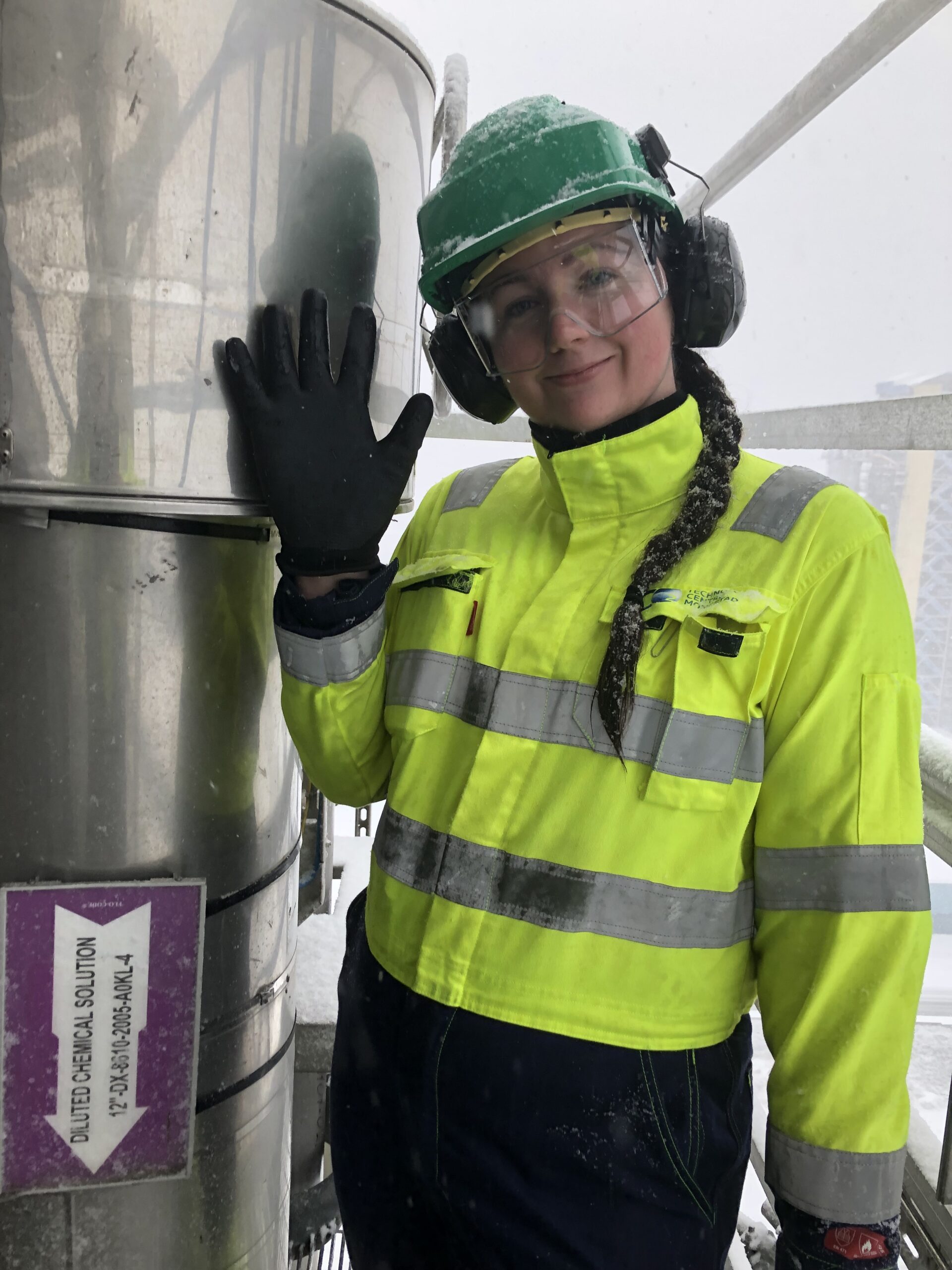
He was our first Chairman
Technology Centre Mongstad (TCM) has a 10-year anniversary in 2022. We celebrate ourselves with interviews with people who in various ways have had impact on the business in these years. Bjørn-Erik Haugan was our first Chairman of the Board, and a key person for TCM.
Why did you apply for a position at TCM?
– As CEO of Gassnova, I was given responsibility for the planning of what eventually became TCM, and formally became Chairman of the Company Meeting (the Board) when the company was founded in 2009. The background was the Stoltenberg government’s ambition to build a full-scale plant for capture of CO2 from the planned the gas power plant at Kårstø. No new gas power without carbon capture, the former red-green coalition government wrote in their «Soria Moria» Declaration in 2005.
However, the industry at the time doubted whether CO2 capture technology was sufficiently mature for full scale deployment. The idea of demonstrating this technology at a large-scale test centre was launched. Later, the plans for CO2 capture at Kårstø were abandoned, but the idea of a test centre was instead introduced in an agreement between the authorities and Equinor for a two-stage development of a CHP power plant at Mongstad. First, a test centre for verification of technology was to be established. Results from the test centre were to be supporting development of a full-scale facility for capturing CO2 . As we now know, the Mongstad full-scale CO2 capture plant was not realized. But personally, I found this schism between climate science, politics and industry to be interesting and instructive.
After I resigned as Chairman, I was until 2021 in various roles involved in business development for TCM.
What will you highlight as the most rewarding and interesting work you took part in at TCM?
– I want to emphasize that we have succeeded in realizing a test centre that has responded to the very basic needs of technology developers and their industrial customers; namely to create comfort that the capture technologies to be used on a very large scale will actually work. In my view, there are today about ten companies around the world that have developed technologies that are mature for full-scale deployment, most of which – with one or two exceptions – have been tested at Mongstad. TCM’s importance for verification of technologies can thus not be overestimated.
It has also been very interesting to participate in the planning and implementation of open, scientific test campaigns. Before we started in 2012, we had not given much thought to involving scientific institutions, but this has proven to be very valuable in establishing standards and reference points for the development of new technologies. The documentation in the form of publications with results from these campaigns, as well as presentations on conferences, have contributed to TCM’s visibility and strong reputation internationally.
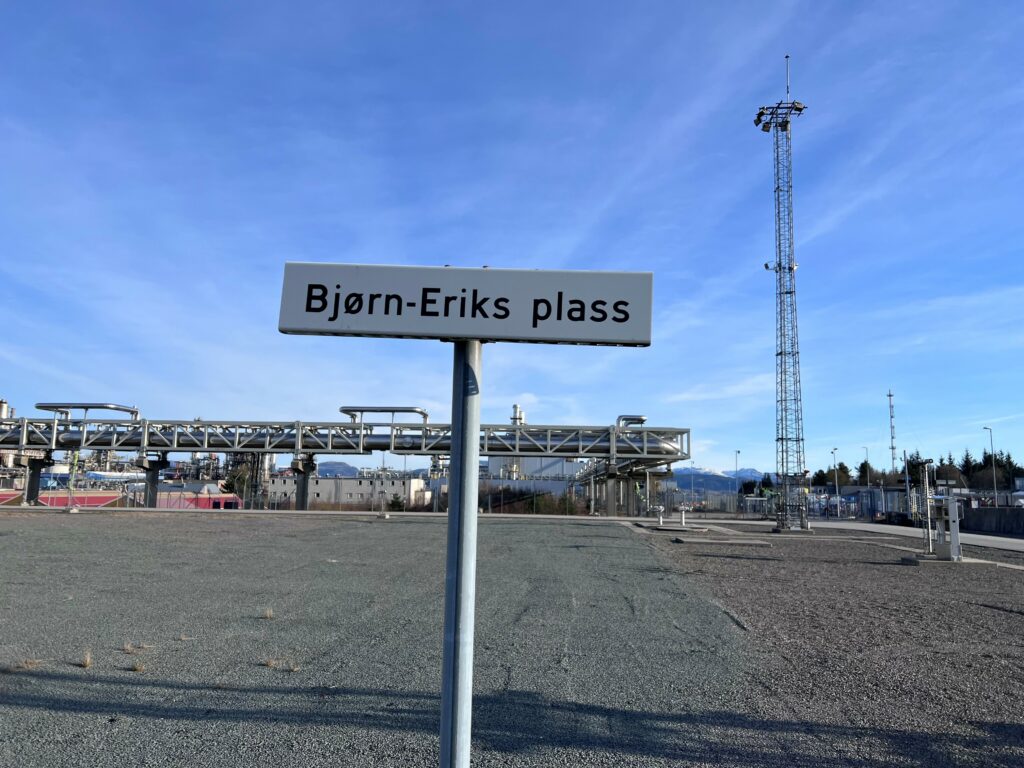
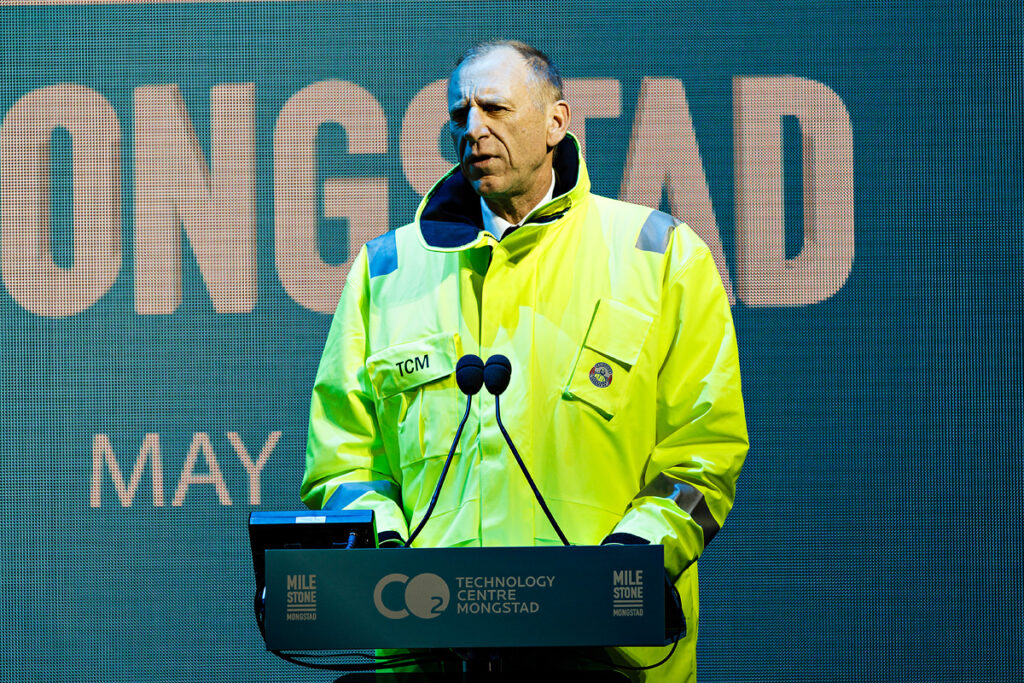
Are there projects or events you remember back with special joy?
– TCM was established based on the situation in Norway, i.e., our national needs for measures against climate gas emissions. But the fact that we succeeded early on in creating interest in TCM in the USA, both in the political environment, in the research communities and among technology developers, was gratifying and a big feather in the cap. The Americans are not known for involving others in their technology projects but gained confidence in TCM. Through agreements with the US Department of Energy, a financial basis was also laid for testing of numerous technologies at TCM. The collaboration was based on an overall agreement between the Norwegian and the US ministries of Energy from 2004. This for TCM has resulted in a number of projects for testing various technologies originating in the United States.
I do not forget when the then Minister of Energy and Nobel Prize winner in physics, Steven Chu, in 2009 arrived at Mongstad in a whole helicopter squadron, to inspect the refinery and the area TCM was to be built on. That image could have been cut from «M*a*s*h», for those who still remember the TV comic about the Korean War.
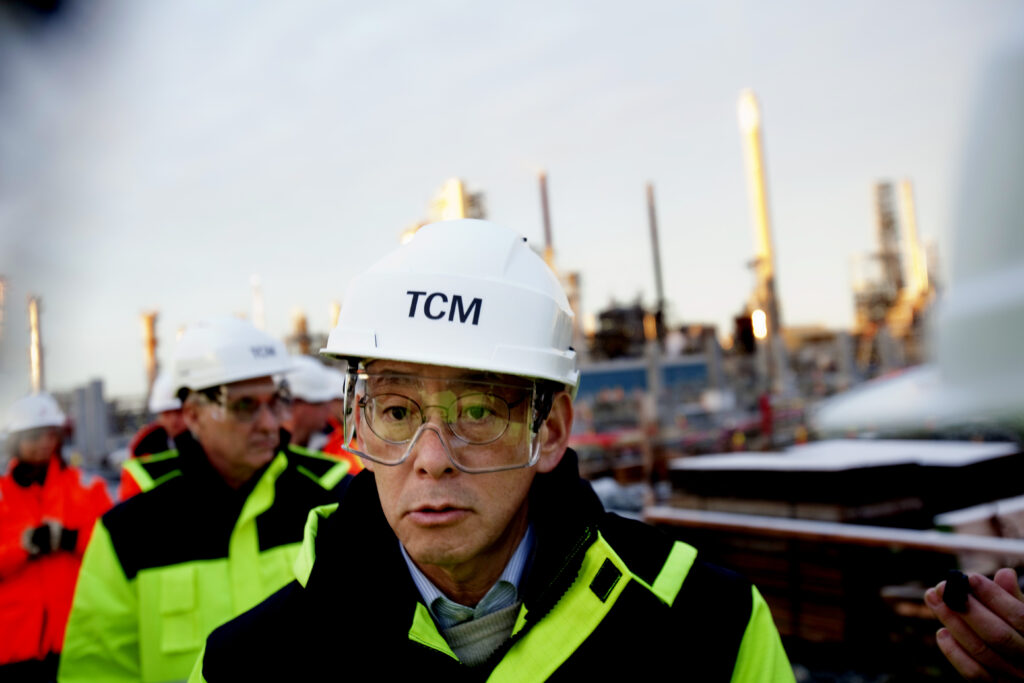
What do you think of as most frustrating about your work at TCM?
– TCM is based on an agreement on shared liability between the Norwegian state through Gassnova, and the companies Equinor, Shell and TotalEnergies. The participants second personnel to work for TCM for shorter and longer periods. This makes it challenging long-term to develop and maintain world leading competence in TCM. I recognize the owners’ need to get back and employ skilled people in their own projects, but the organizational model with a high rate of rotation of key persons at TCM is a challenge for TCM.
When you tell your friends and acquaintances about the business at TCM, what do you emphasize as the most important utility value?
– I must admit it is not always easy, because the story of technology verification often becomes a bit distant and abstract. But I like to use the image with a ship – where everyone on board is dependent on and trust the vessel is designed and equipped in a safe way. Similar, both those who are going to sell and those who consider buying technology for CO2 capture will need confidence that it works in practice on a large scale. TCM is a stadium or stage to provide certainty that «the ship will not sink».
What is your wish for TCM the next ten years?
– Development and testing of technology will be important and necessary for many years to come. Therefore, I hope the Norwegian authorities at the next crossroad will give TCM a longer operation period than just three years. This is important to create greater predictability for customers, partners and employees. With a longer agreement period, I also hope that the owners will facilitate a greater degree of continuity in their secondment of personnel to the company.
I also hope that TCM’s scope can be expanded somewhat, so that the company can participate in the development of other green technologies, such as the production of hydrogen.
Name: Bjørn-Erik Haugan
Age: 70
Education: M.Sc. in technical physics at NTNU (Norwegian University of Science and Technology) in Trondheim
Marital status: Married, one child
Affiliation with TCM: CEO of Gassnova 2004 – 2012 with i.a. responsible for planning TCM, chair of the Company Meeting in TCM (Chairman of the Board) 2009 – 2012, manager of business development at TCM 2012 – 2019 (seconded from Gassnova)
Current position: Retired
When you generally look back on the business at TCM both before and after the opening in 2012, what do people that worked at TCM or still are working there have particular reason to be most proud of?
– That testing of technologies at TCM, with the support of a very competent personnel, has become a «must» for practically everyone in the world who today aim to deliver full-scale solutions for CO2 capture to various industries. TCM has a unique facility and a leading position in the CCS world!
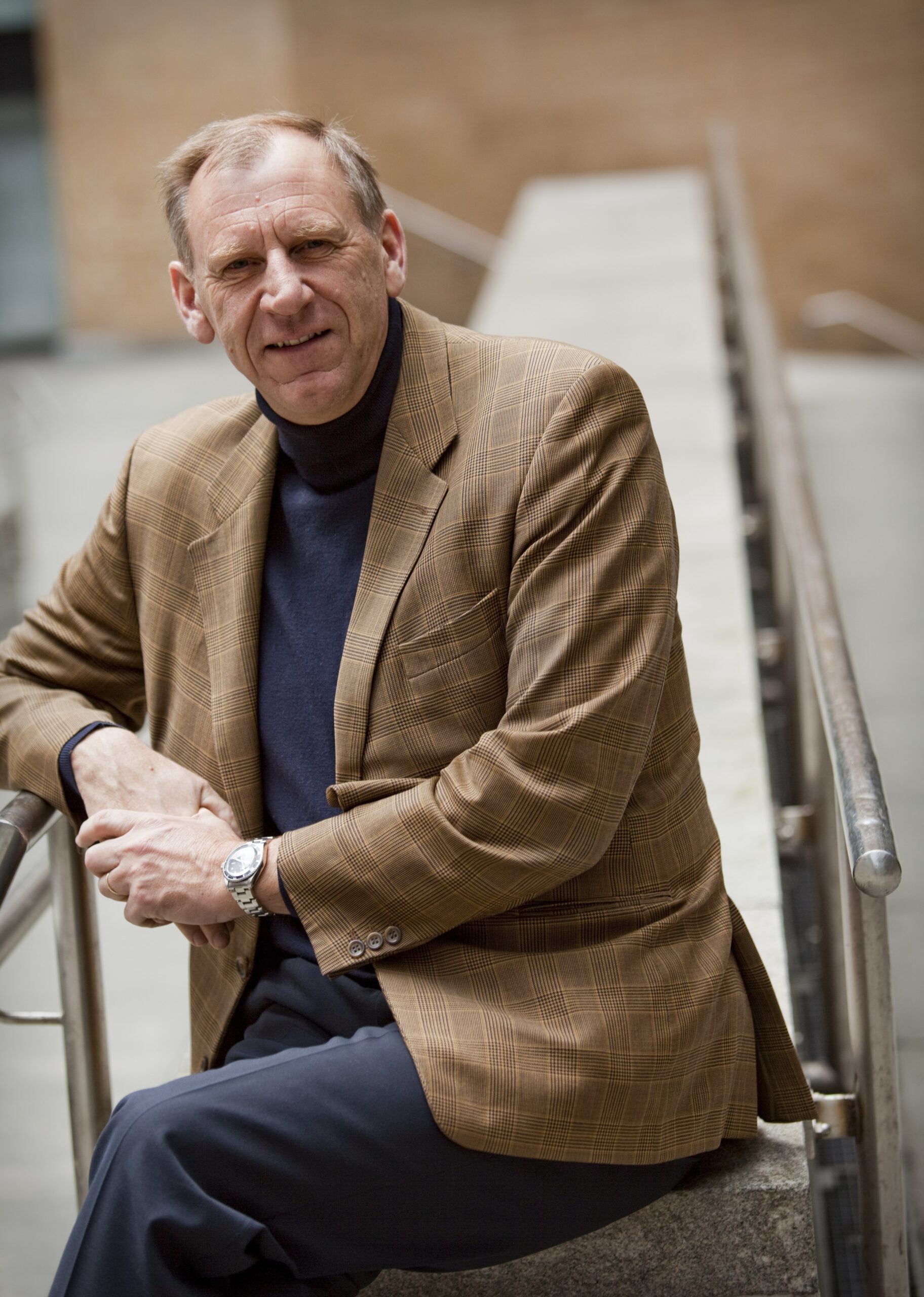
He was our first Managing Director
Technology Centre Mongstad (TCM) has a 10-year anniversary in 2022. We celebrate ourselves with interviews with people who in various ways have had impact on the business in these years. First out is our first Managing Director, Tore Amundsen.
Why did you apply for a position at TCM?
– In 2008, I became Gassnova’s project manager during the planning of the capture facility at Mongstad. One year later, when the company was founded, I was asked to take the role as Managing Director, an offer I could not refuse.
How was your first meeting with TCM?
– It was at the founding meeting of TCM DA in 2009 at Equinor’s offices in Trondheim. Representatives from the Ministry of Petroleum and Energy, Gassnova, Equinor and Shell met here. The parties signed the Participants Agreement, and I was formally appointed Managing Director. The atmosphere was good, and I was wished good luck. At first, my employees and I had offices at Equinor’s in Sandvika, but the following year we moved to the construction rig at Mongstad and followed the construction of the facility from there.
What will you highlight as the most rewarding and interesting work you took part in at TCM?
– It was great to be part of realizing the world’s largest test facility of its kind. During the construction and after it was completed in 2012, we had several thousand visitors. I also got to travel around the world at conferences and events to talk about TCM and was met with great interest. Initially, we were given a mandate to operate the plant for five years, to contribute to the development of two different technologies for CO2 capture. I am very happy and proud that the operation period has been extended later. TCM’s business is at least as important and valuable today as when we started ten years ago.
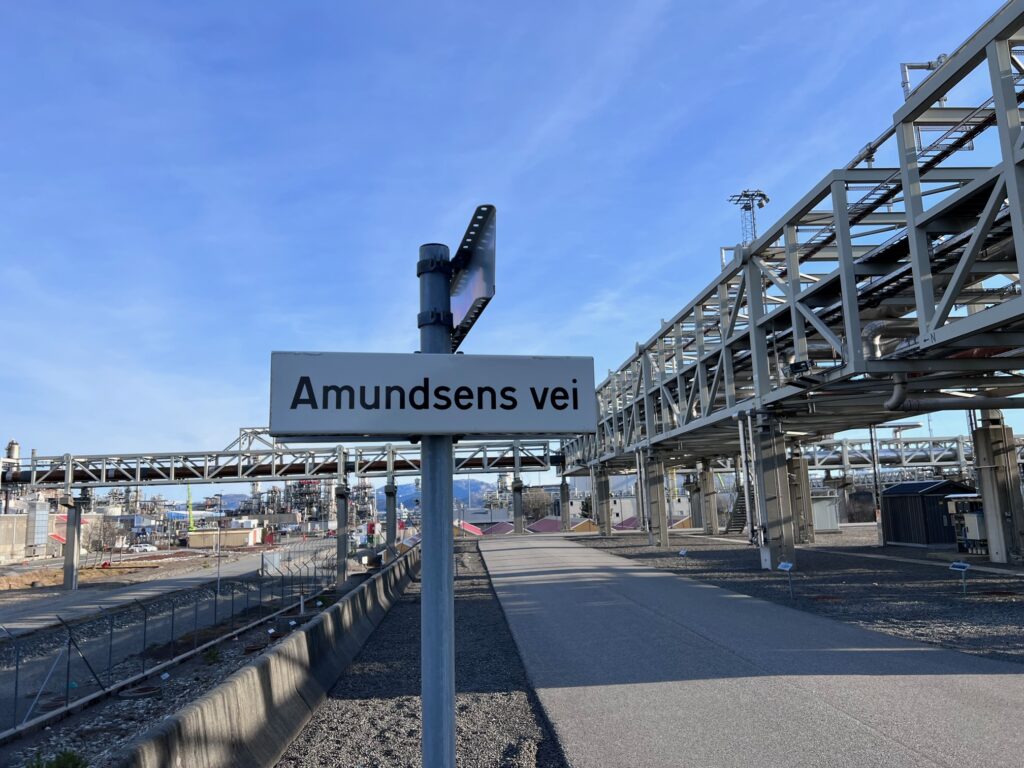
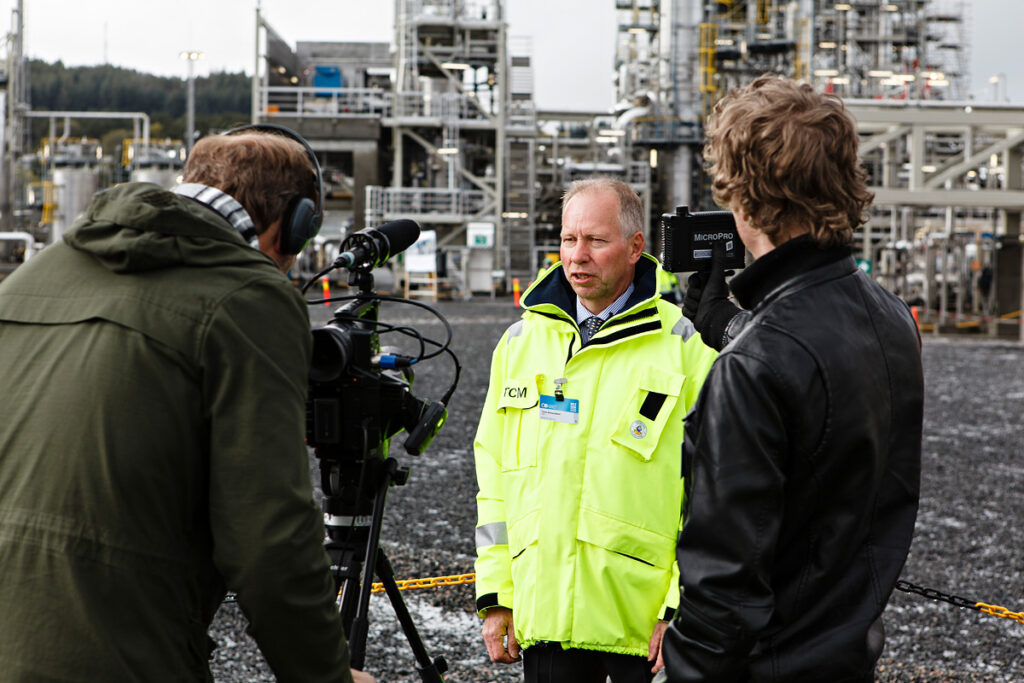
Are there projects or events you remember back with special joy?
– During the planning, there were long discussions about whether the plant should only be dimensioned and equipped for testing amine-based technologies, or whether it should also include testing of technologies with chilled ammonia. We had doubts about maturity of the chilled ammonia technology in particular, but the TCM partners finally decided to go for both.
The second milestone I want to mention was when we in the autumn 2009 invited South African Sasol Ltd. as partner. Although Sasol withdrew after five years, they contributed greatly with important knowledge and experience they had from their own business.
Then of course I have to mention the opening in 2012. The Ministry of Petroleum and Energy made it clear that they expected us to show off in a big way, and so we did. We braved the rain on a magnificent stage and giant screens, and the Prime Minister, Jens Stoltenberg, opened it all to great applause from 300 guests from home and abroad. A memory for life!
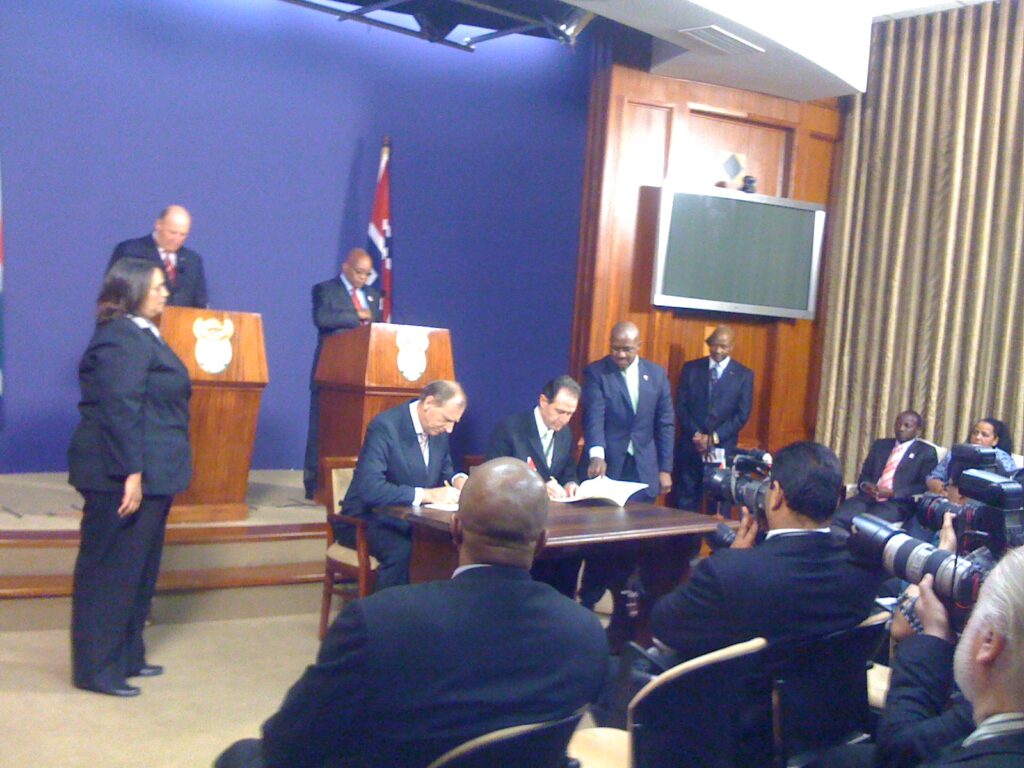
– Are there projects or events you remember back with special joy?
– During the planning, there were long discussions about whether the plant should only be dimensioned and equipped for testing amine-based technologies, or whether it should also include testing of technologies with chilled ammonia. We had doubts about maturity of the chilled ammonia technology in particular, but the TCM partners finally decided to go for both.
The second milestone I want to mention was when we in the autumn 2009 invited South African Sasol Ltd. as partner. Although Sasol withdrew after five years, they contributed greatly with important knowledge and experience they had from their own business.
Then of course I have to mention the opening in 2012. The Ministry of Petroleum and Energy made it clear that they expected us to show off in a big way, and so we did. We braved the rain on a magnificent stage and giant screens, and the Prime Minister, Jens Stoltenberg, opened it all to great applause from 300 guests from home and abroad. A memory for life!
What do you think of as most frustrating about your work at TCM?
– When the agreement on the establishment of TCM was entered into in 2009, Equinor’s owner share was 20 percent, and they were also given the responsibility as Operator of the test facility. They had extensive experience with offshore operations and had the same approach to how TCM should be operated. Gassnova and I had clear objections, and the long discussions this entailed I could easily have been without. But in the end, we fortunately agreed. And even though the tone in the meetings at times had been sharp, we experienced the operators we worked with on a daily basis as very skilled and loyal.
When you tell your friends and acquaintances about the business at TCM, what do you emphasize as the most important utility value?
– It can be difficult having to explain complicated technologies about carbon capture. So, the simple story is that testing and disseminating knowledge about methods for CO2 capture is important to save the world from environmental disaster. Both the IEA and the UN Climate Panel have stated that capture and storage of CO2 is absolutely necessary to achieve the climate goals.
What is your wish for TCM the next ten years?
– Capture, storage and use of CO2 (CCUS) is still in its infancy, but the Longship project is an example of the industry now coming of age. But the technologies must be developed and improved even further – with TCM as an important player. I also hope that more large companies will see the benefit of becoming co-owners of TCM, in order to gain first-hand information and knowledge about all that carbon capture entails. The competence built up at TCM is unique.
Name: Tore Amundsen
Age: 74
Education: MSc in Economics
Your employment at TCM: Gassnova’s project manager 2008 – 2010, Managing Director 2010 – 2012, Chairman of the Board 2013 – 2015
Your current position: Retired, some consulting business in my own company
When you generally look back on 10 years of business at TCM, what do people that worked at TCM or still are working there have particular reason to be most proud of?
– No doubt that we have succeeded in building and operating a facility that prominent companies and research institutions around the world use to test new technologies on an industrial scale. TCM is the most important test facility for CO2 capture technologies, and the facility will be needed for many years to come.
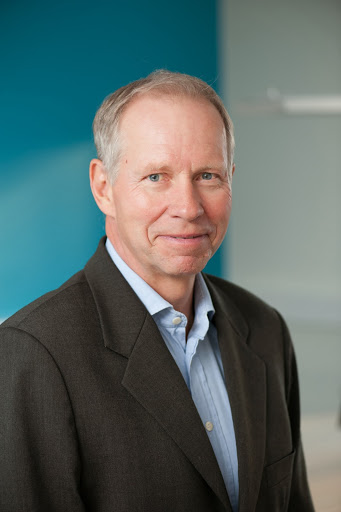
TCM celebrates its 10th anniversary
It has been ten years since the Technology Centre Mongstad (TCM) was opened in May 2012. The world’s largest and most flexible center for testing and verfication of carbon capture technologies, has been of crucial importance for the planning and realization of a number of projects for reducing climate gas emissions in both Norway and internationally.
Bridging the gap
TCM is advancing carbon capture for a cleaner and greener future, by bridging the gap between technology developers, science and industrial application of CO2 technologies. The main objective of TCM is to test, verify and demonstrate different technologies related to cost-efficient and industrial scale CO2 capture. Moreover, we provide advisory services to carbon capture projects. Our goal is to facilitate the advancement of carbon capture technology for mass deployment across industries. We are an important part of Norway’s contribution to mitigate climate change.
Follow us in the anniversary year
Throughout the anniversary year, we will describe important events and projects since the start in 2012, and show films that better than words explain why we are so proud of the company and its business. We will also interview people wo played an important role in the establishment and construction of TCM, and who have contributed to the implementation of test campaigns that have given technology suppliers and research environments important knowledge on how to capture CO2 with the best possible effect and the greatest possible safety at the lowest possible cost.
We hope you follow us on the exiting journey through TCM’s history.

